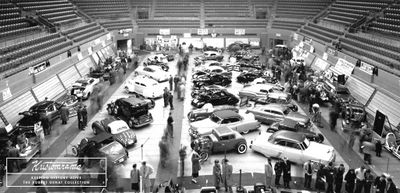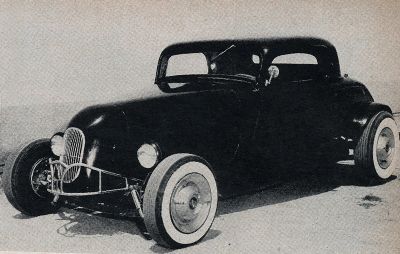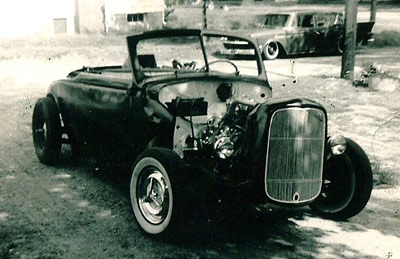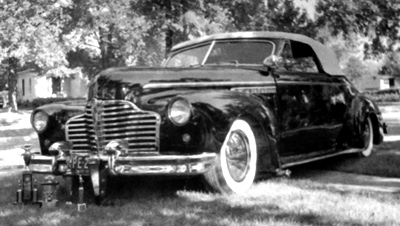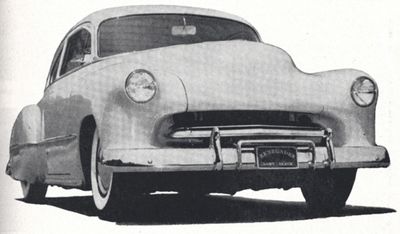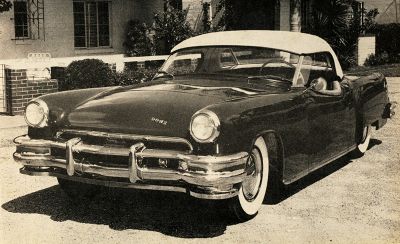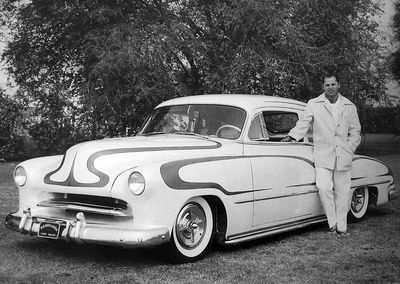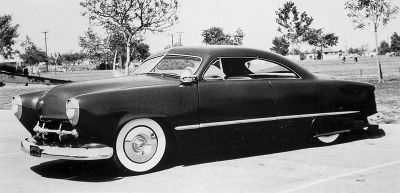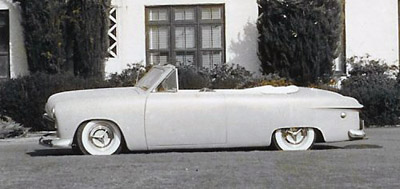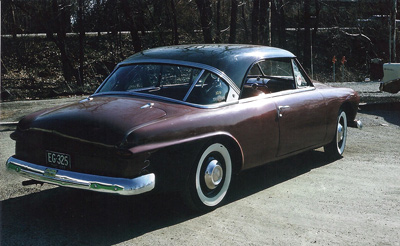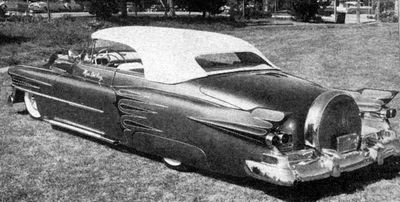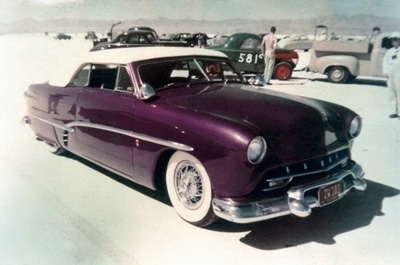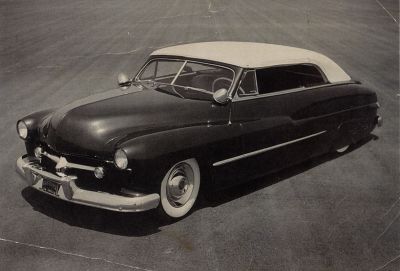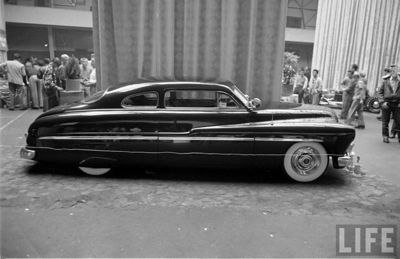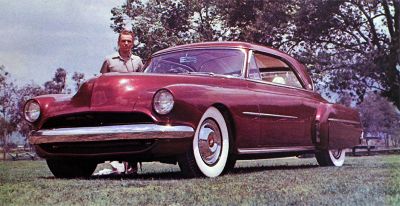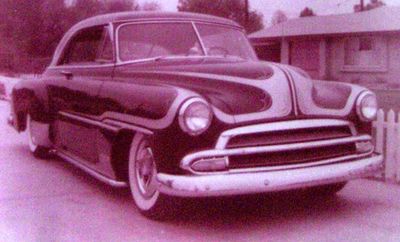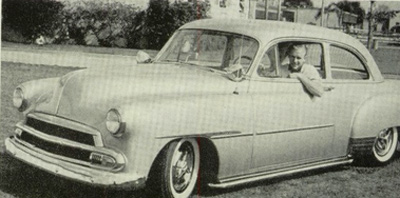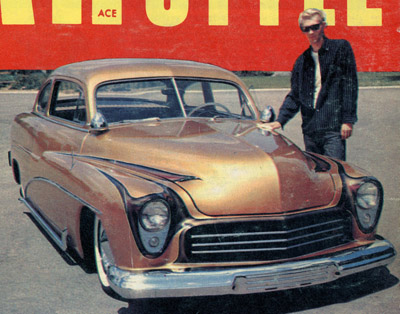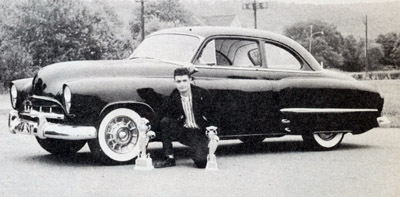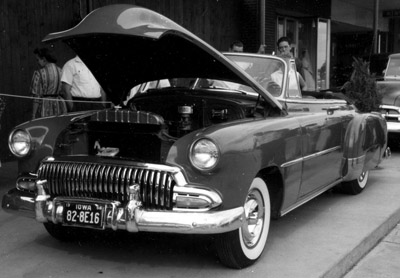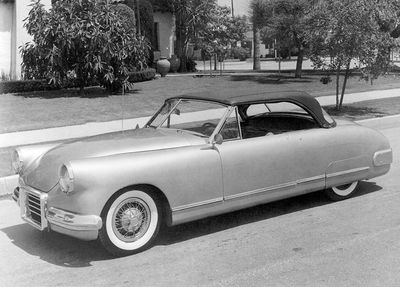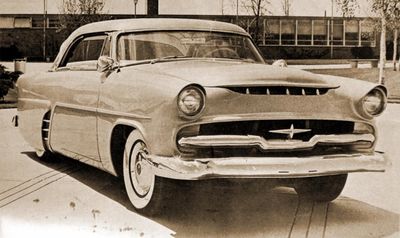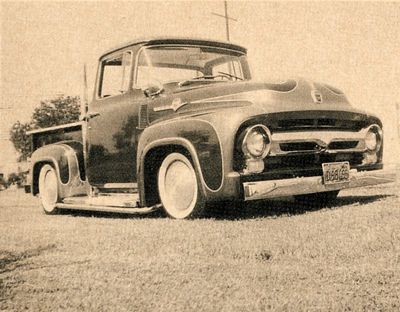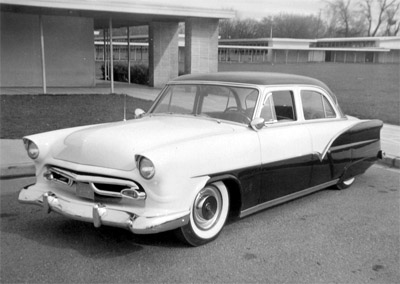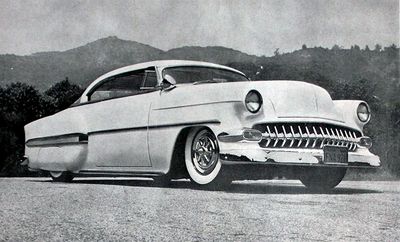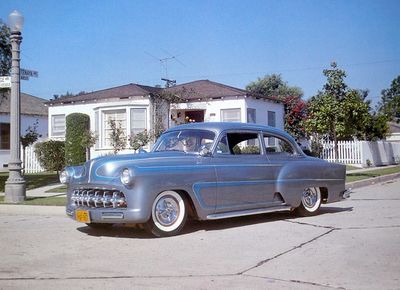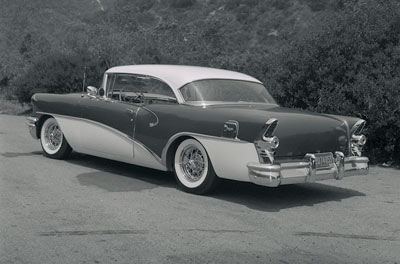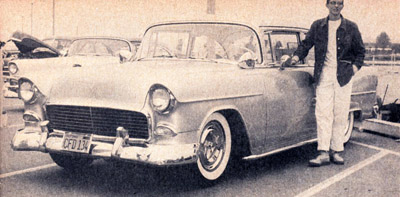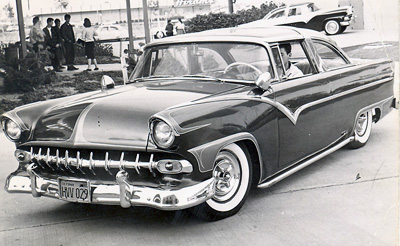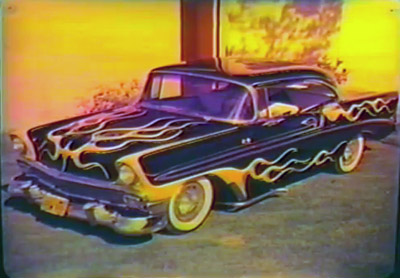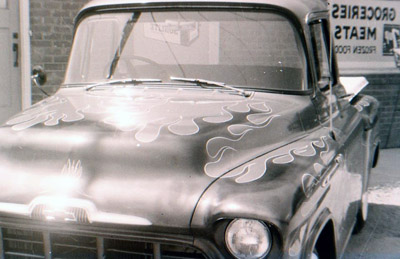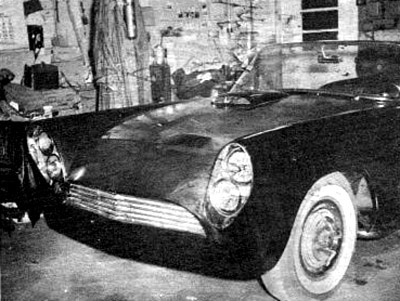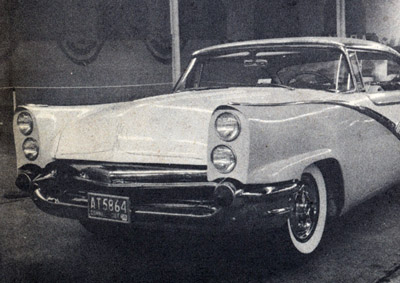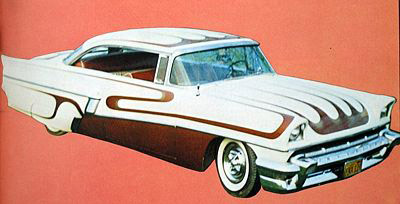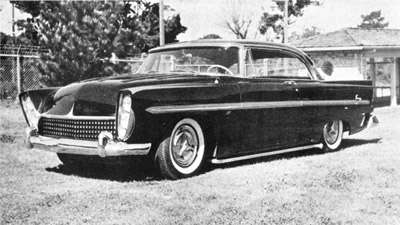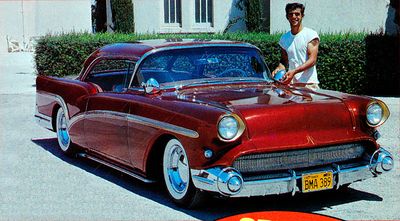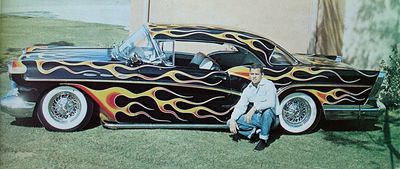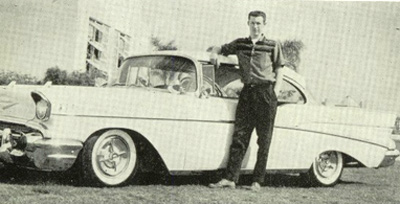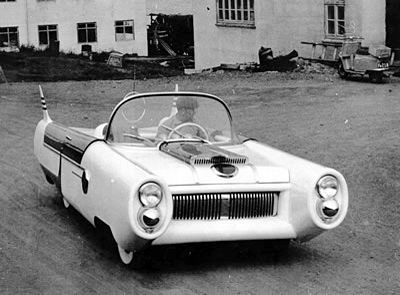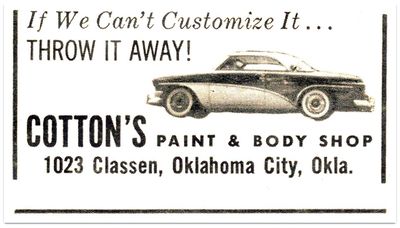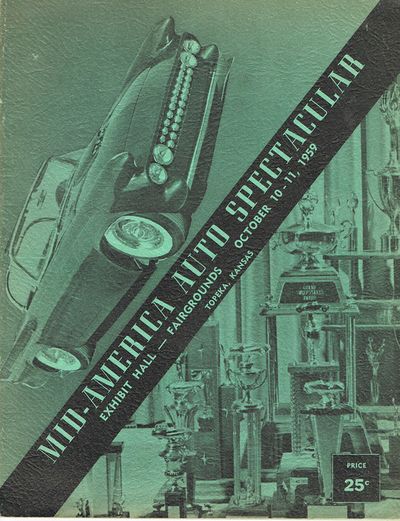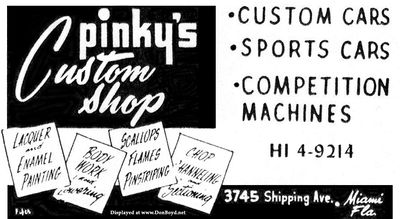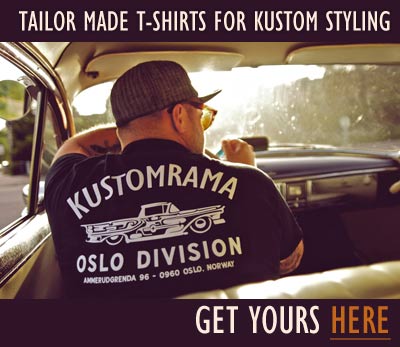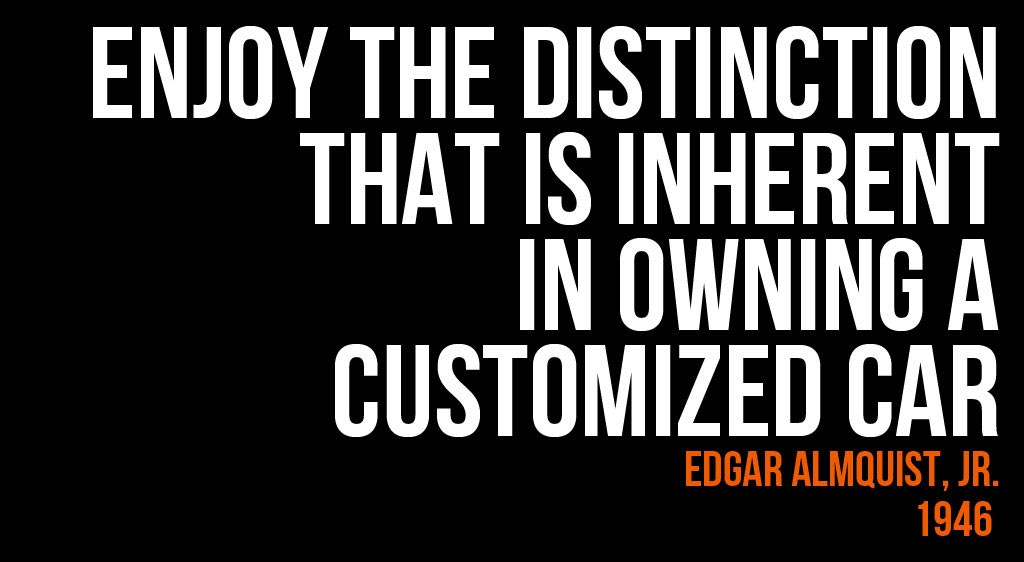1950s
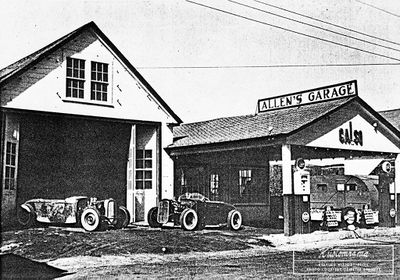






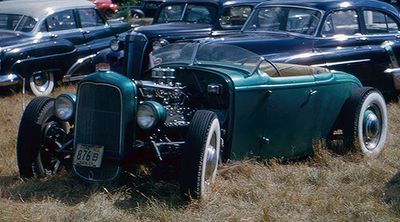
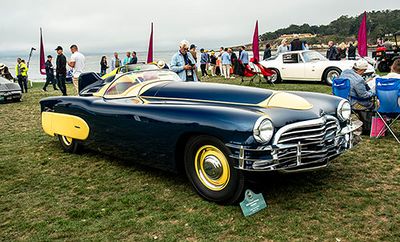




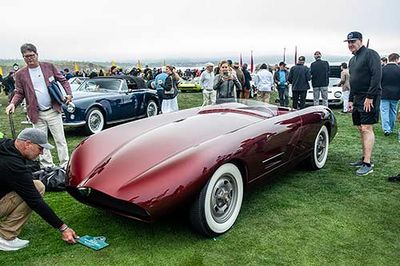

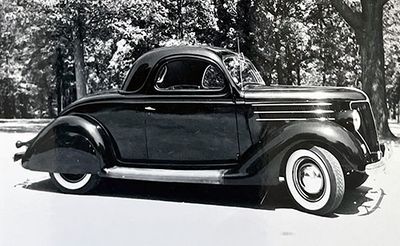

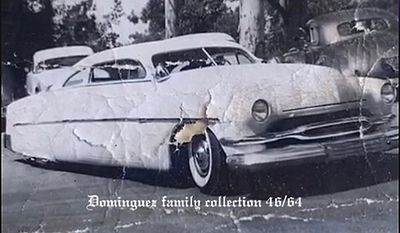


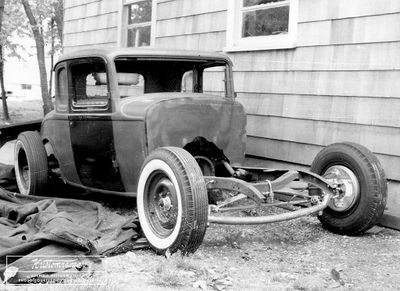
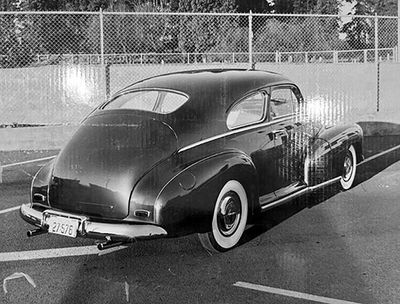

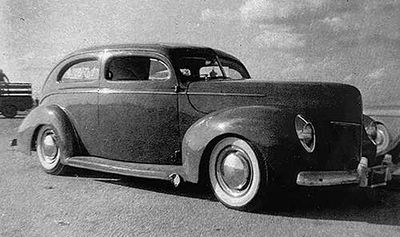
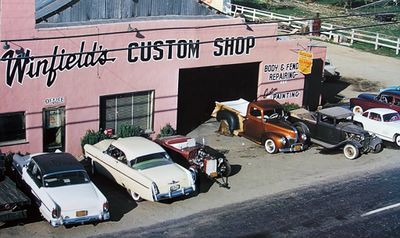
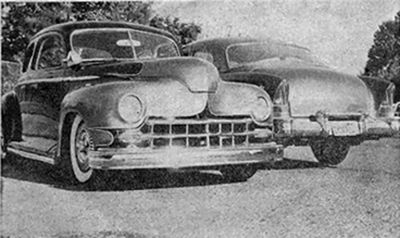




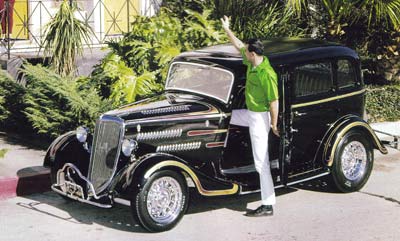

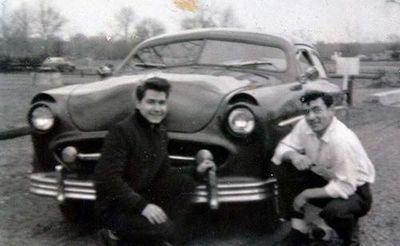



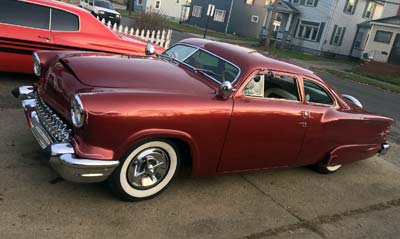


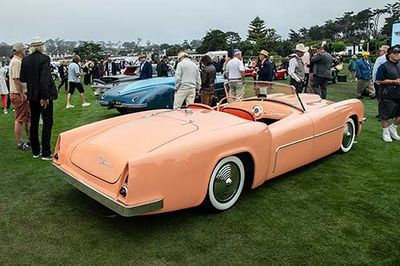
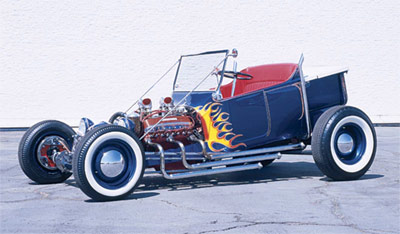

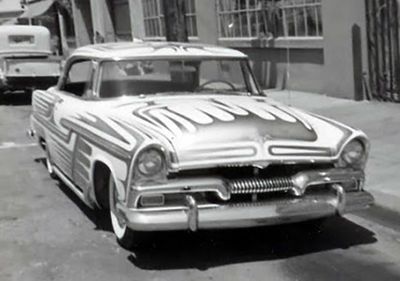


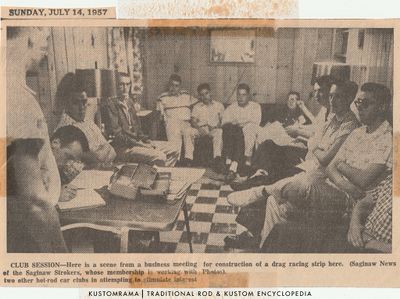
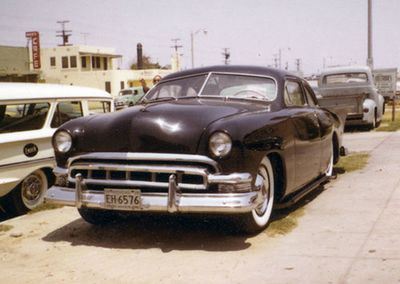
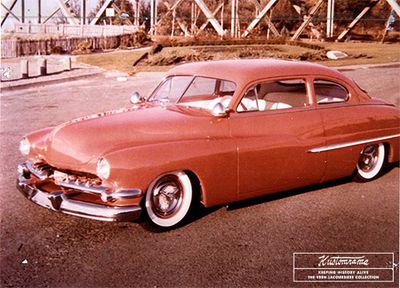
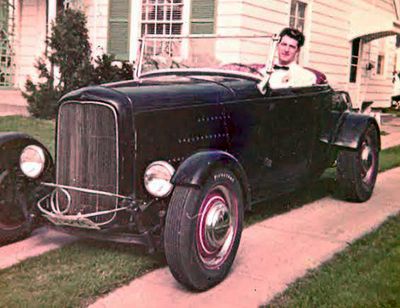
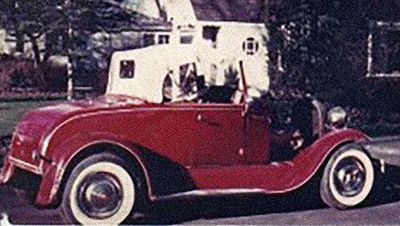







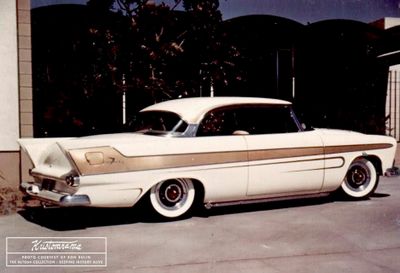

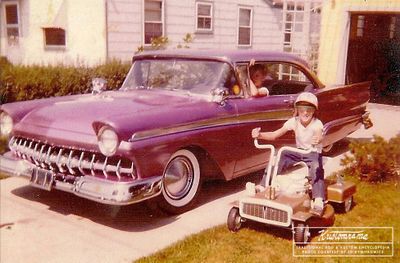



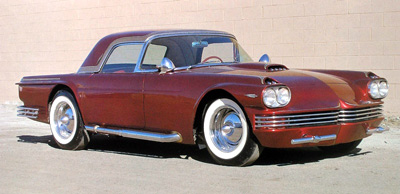
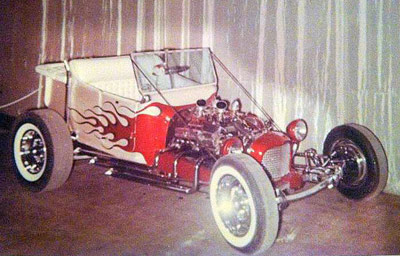

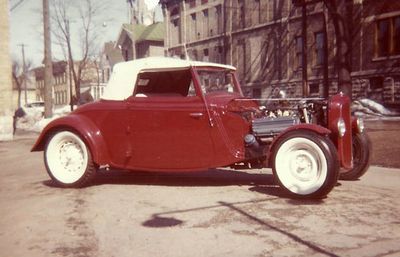
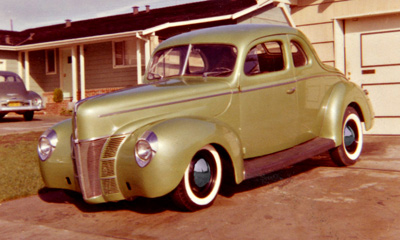
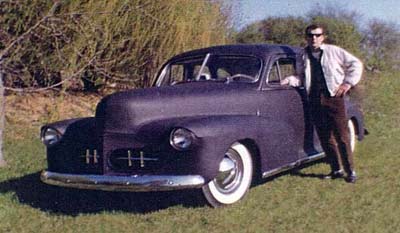
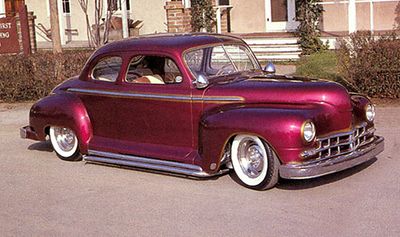
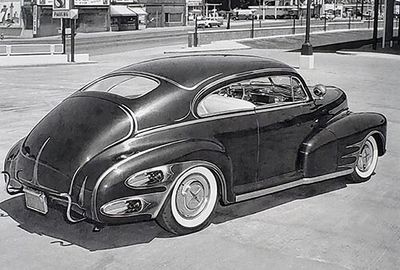

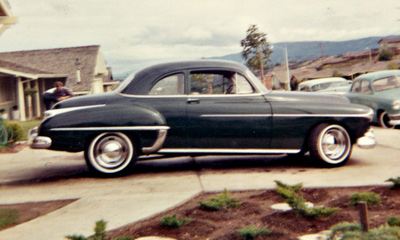

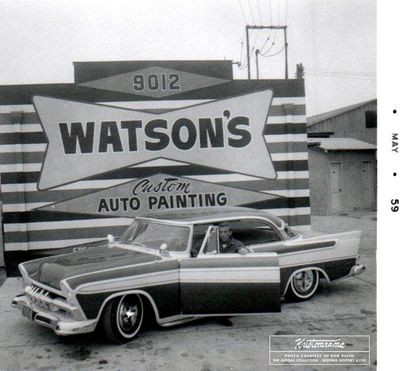


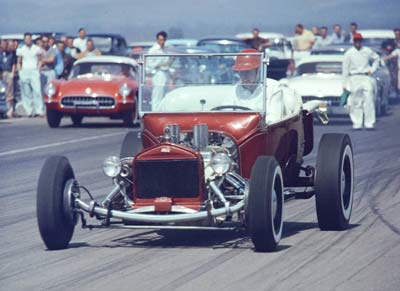

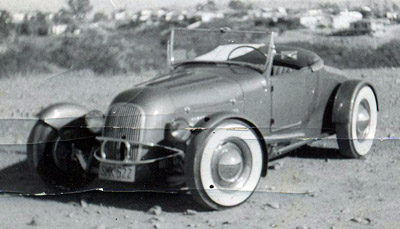
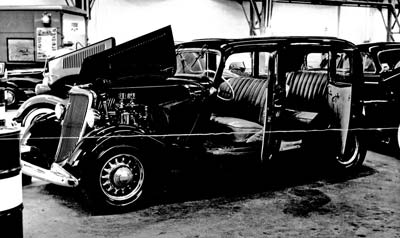

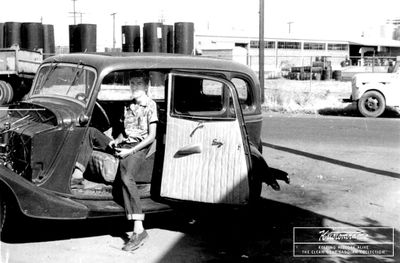
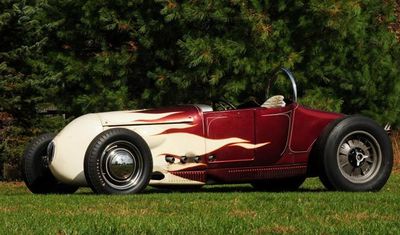
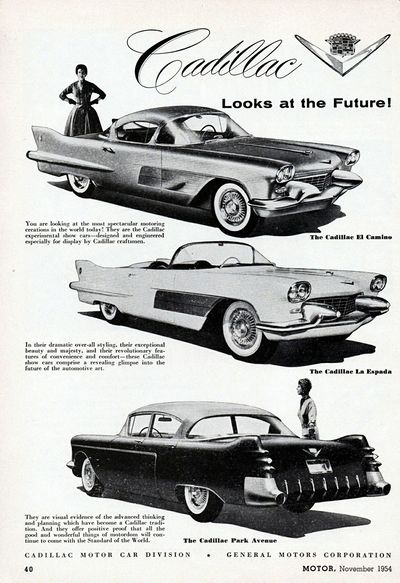

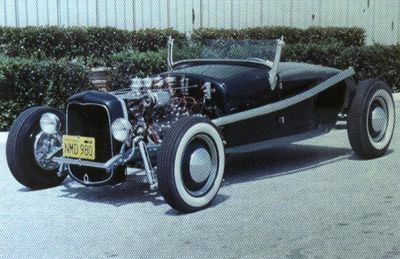
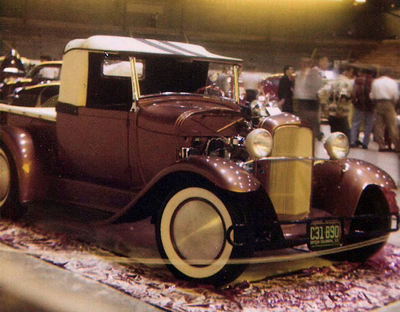
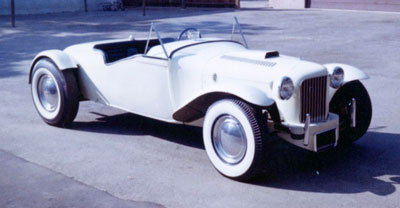


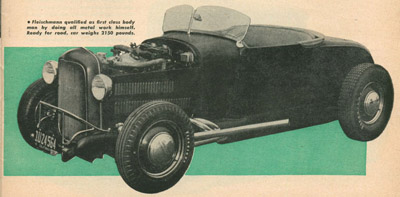




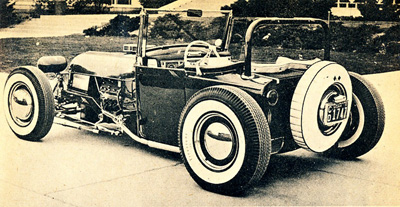

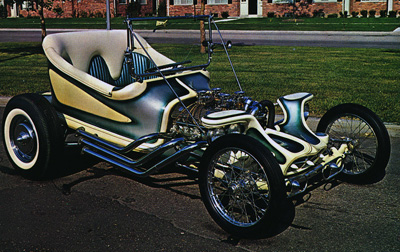
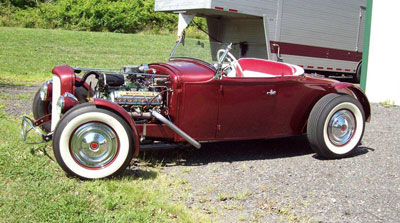
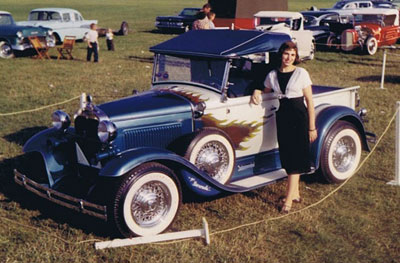





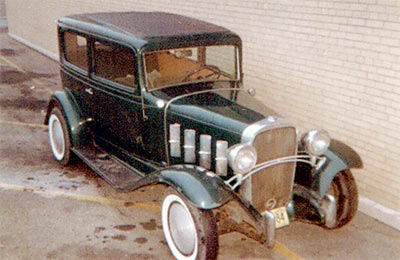

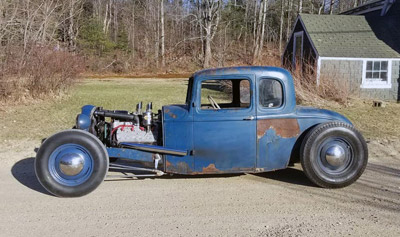
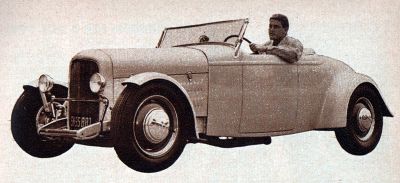
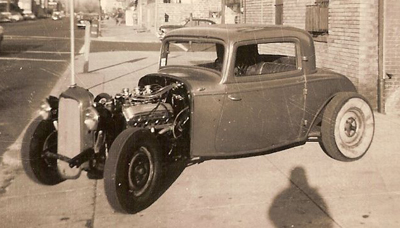

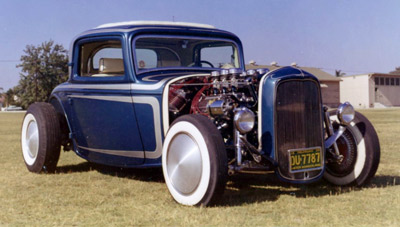


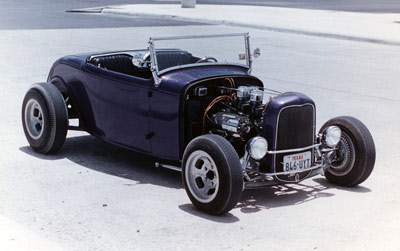

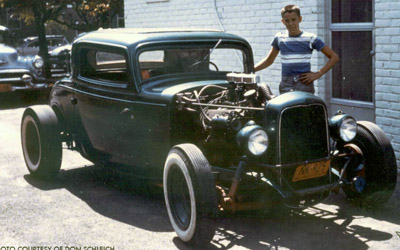
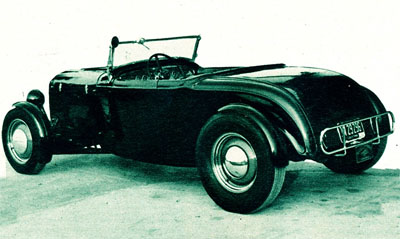
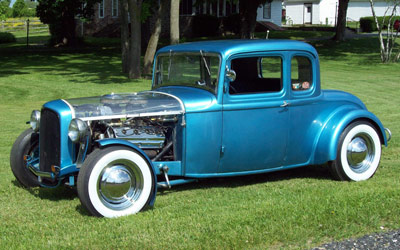
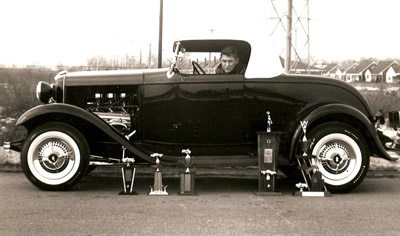

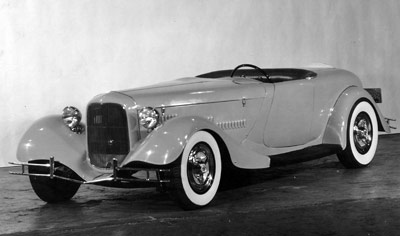



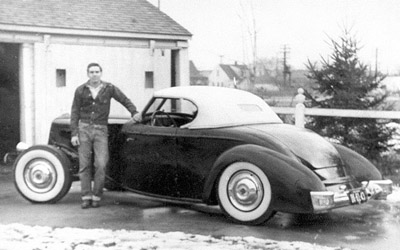
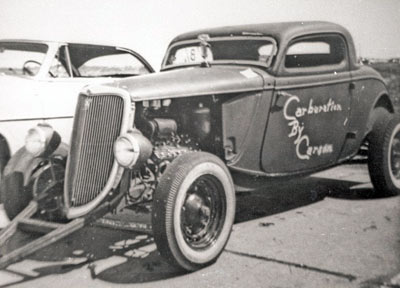
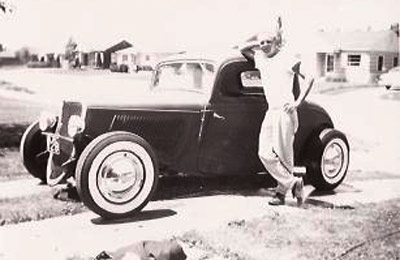

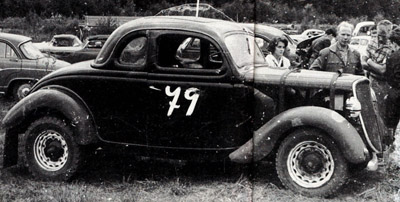



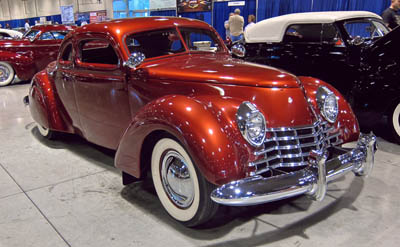
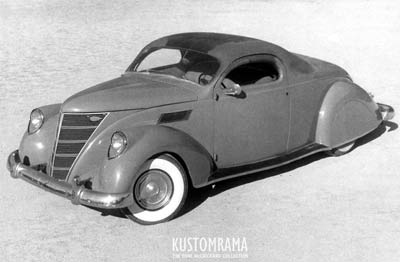



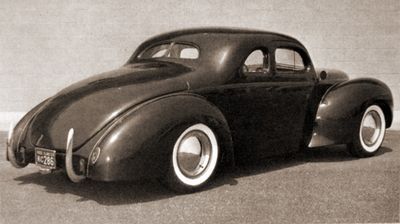

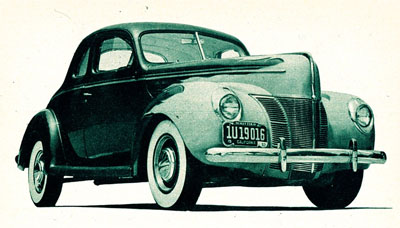

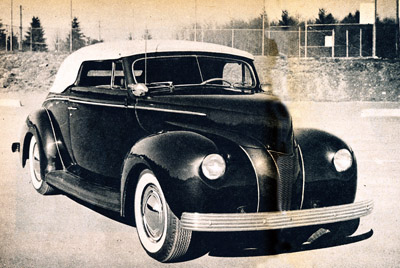
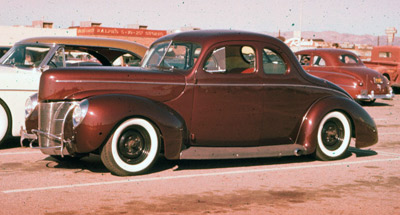
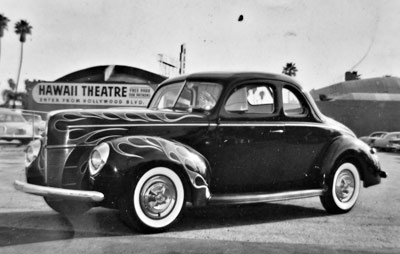
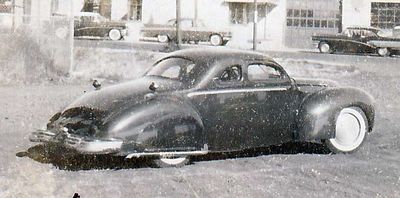


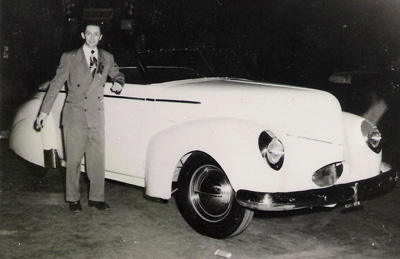

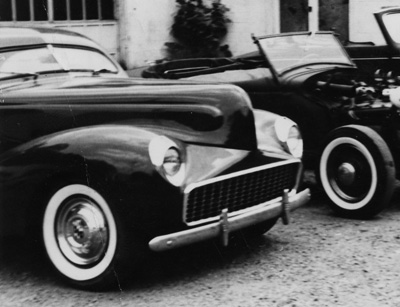

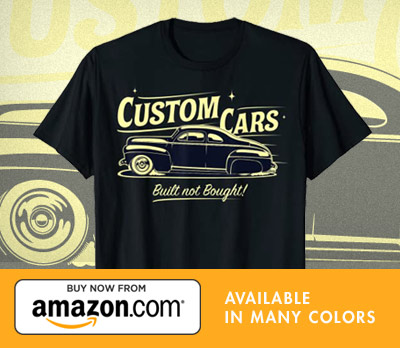
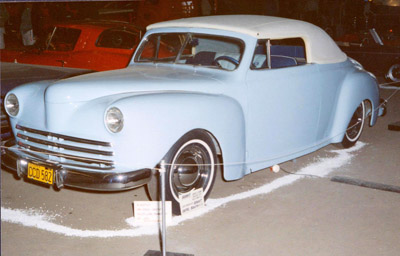



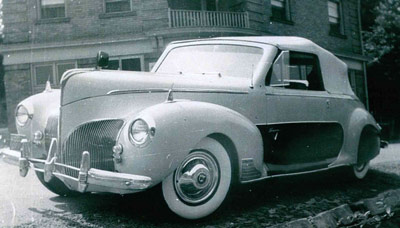




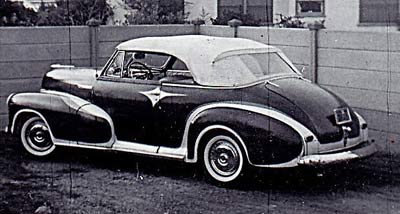

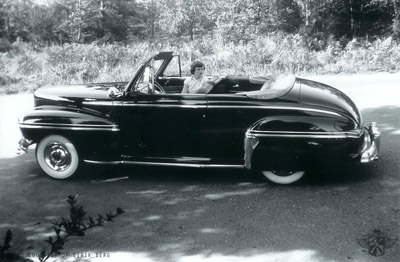



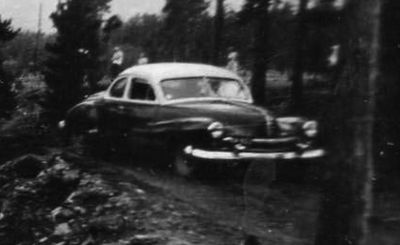
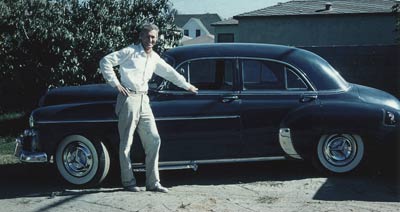






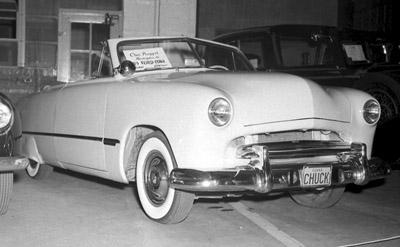
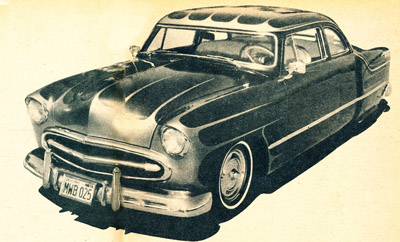
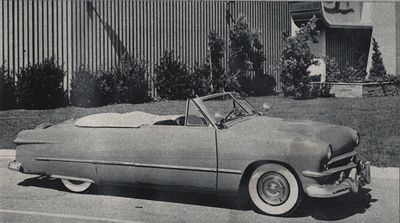

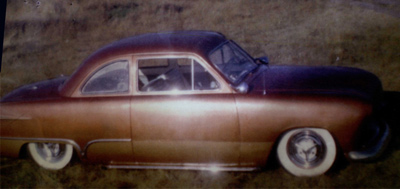

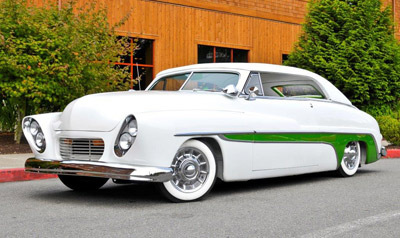



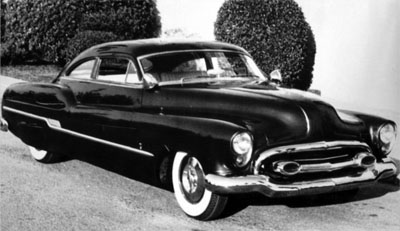
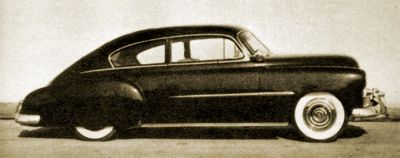
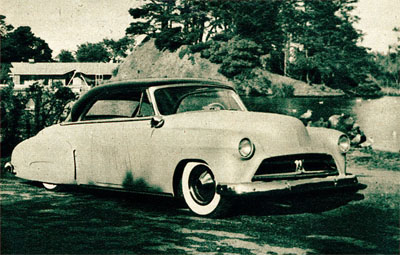



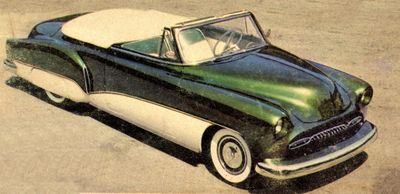
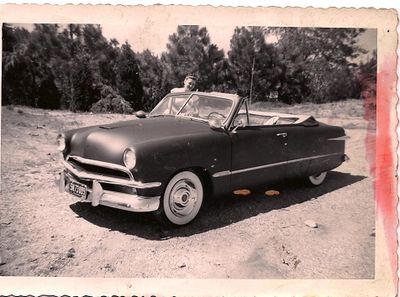

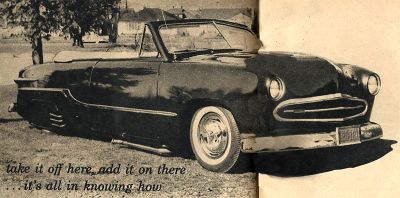



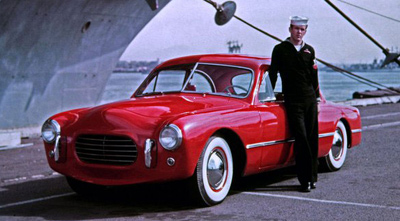
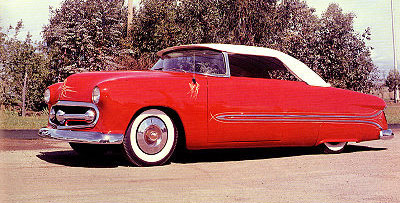

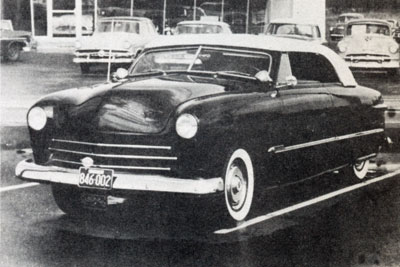

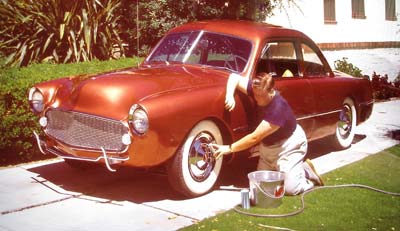



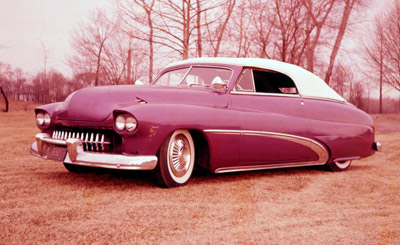




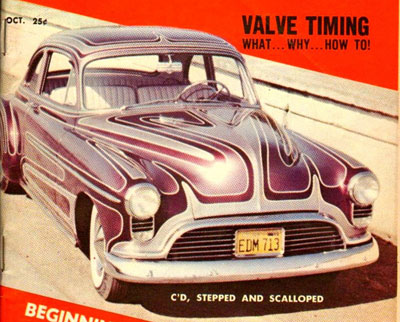

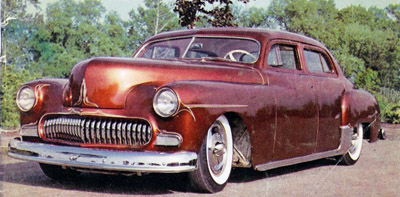
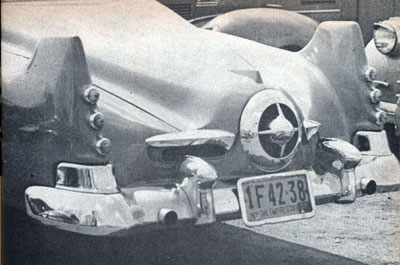

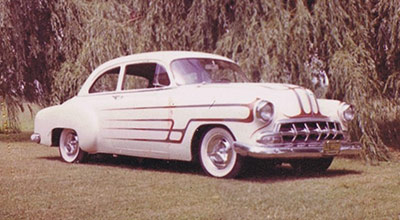
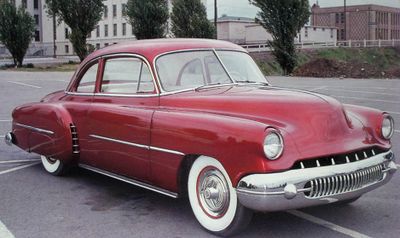

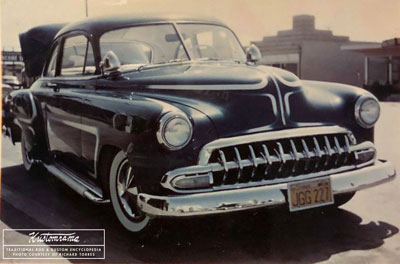
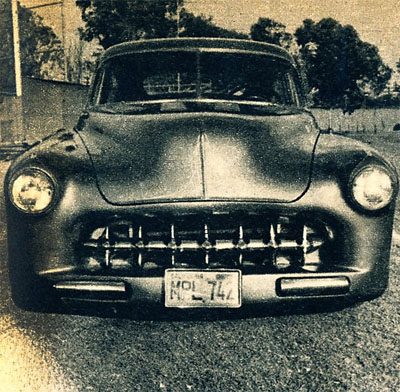


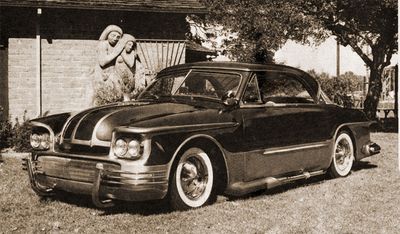



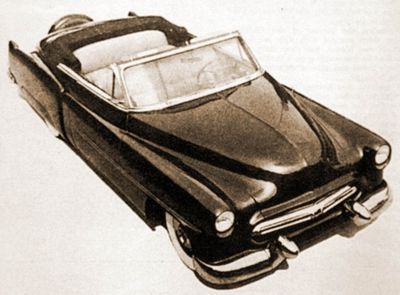

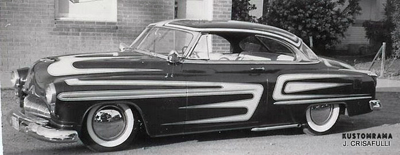
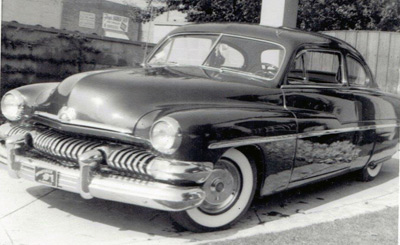


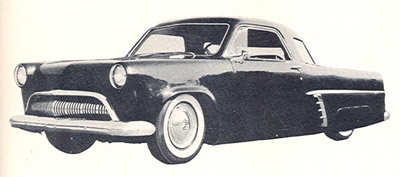


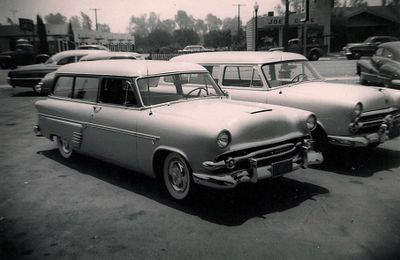

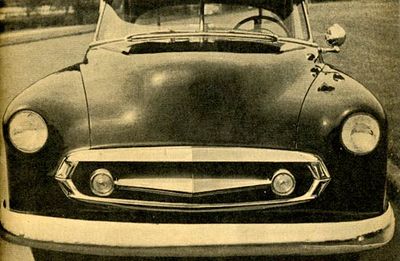



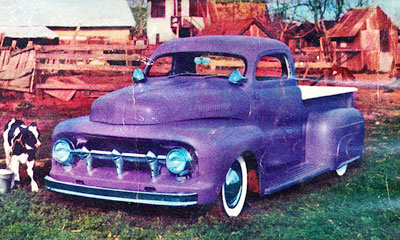










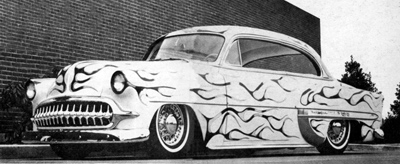

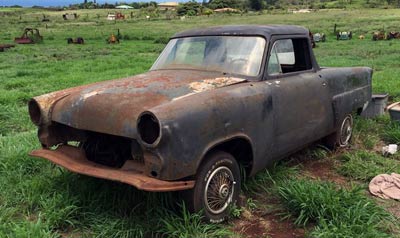
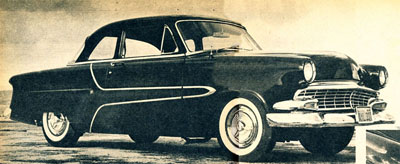




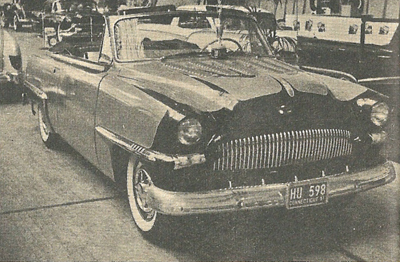
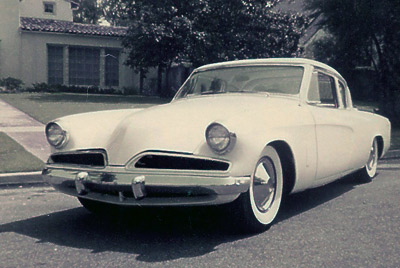


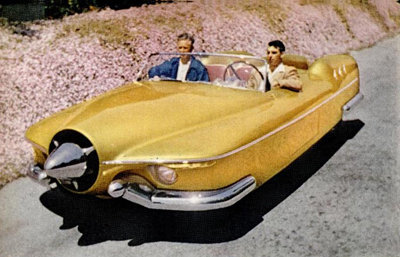


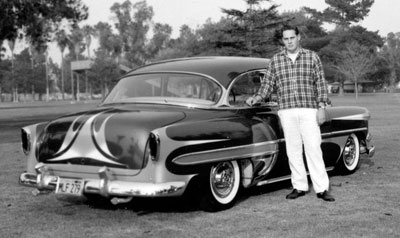

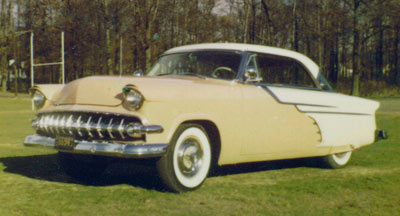
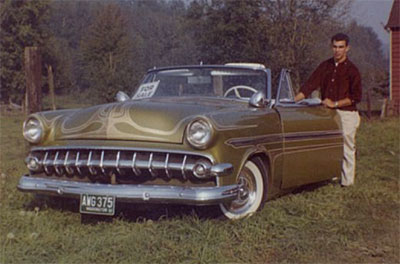

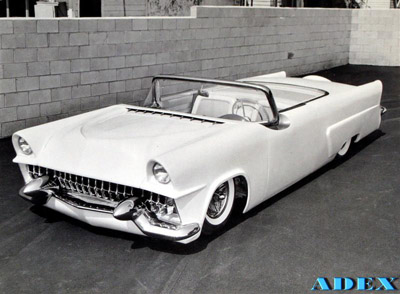




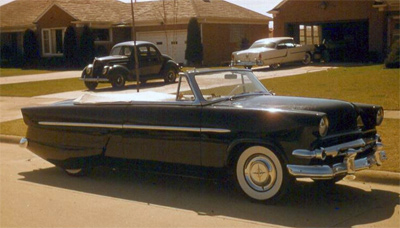







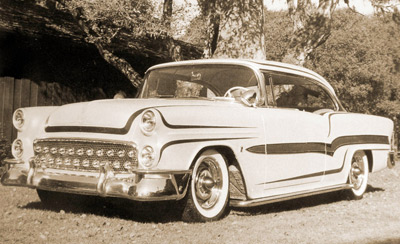

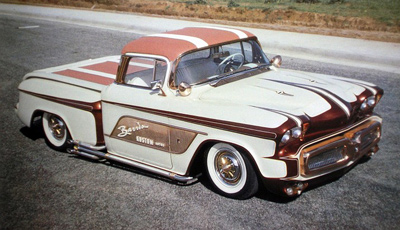
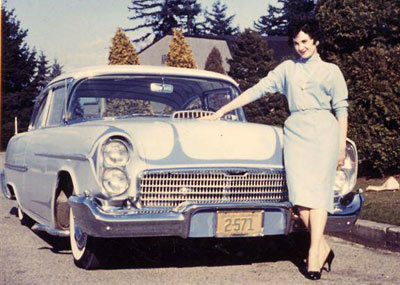



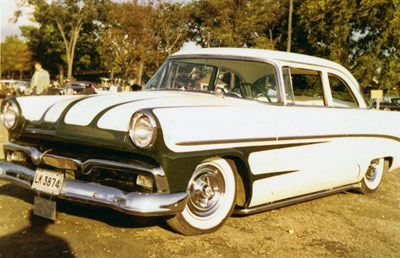
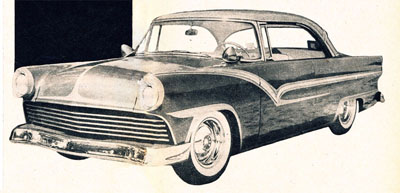

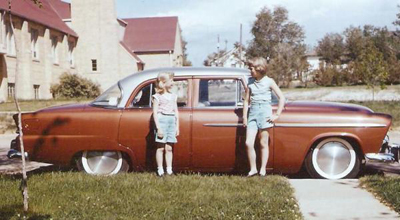
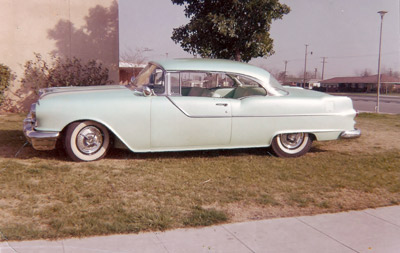




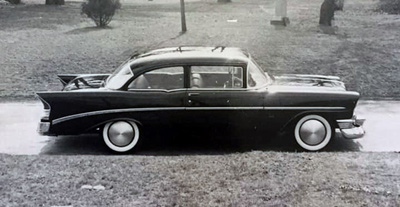




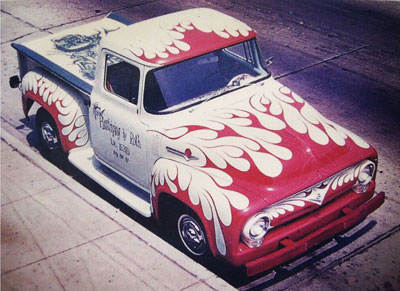



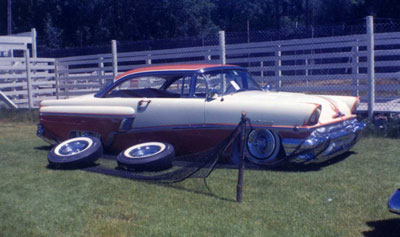
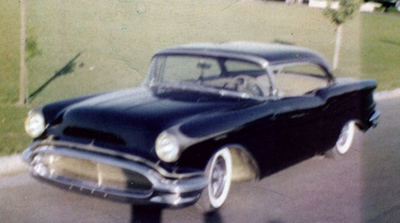




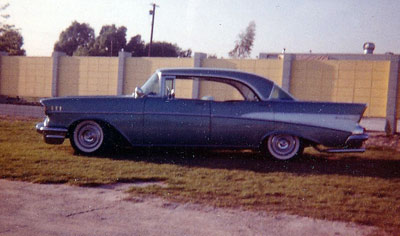

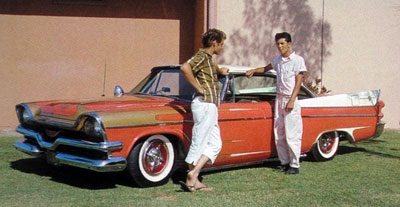


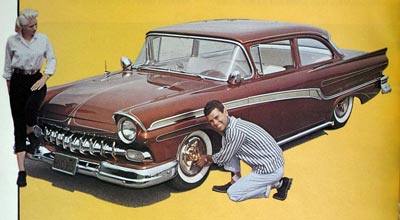




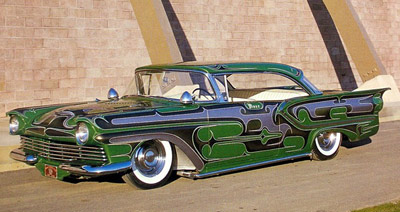
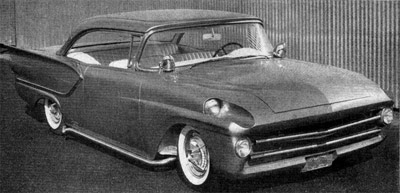
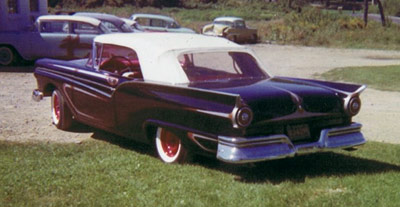
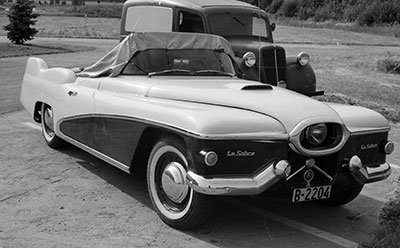
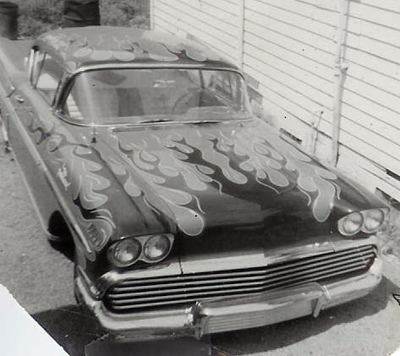

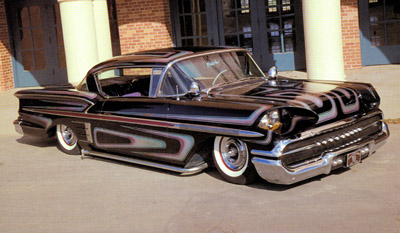
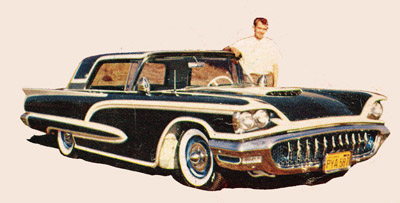

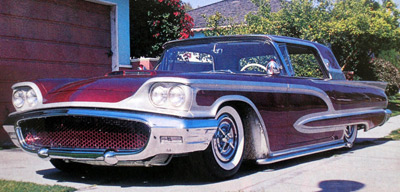
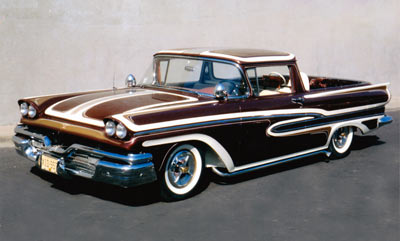
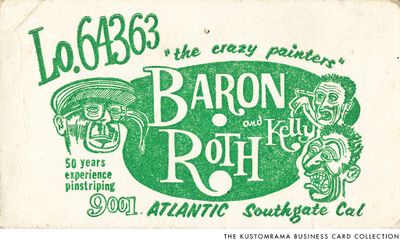
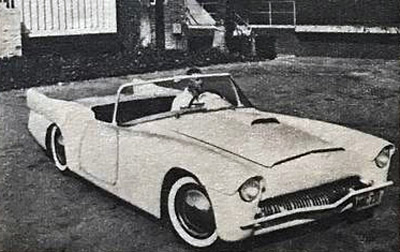
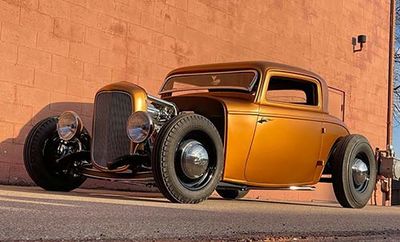
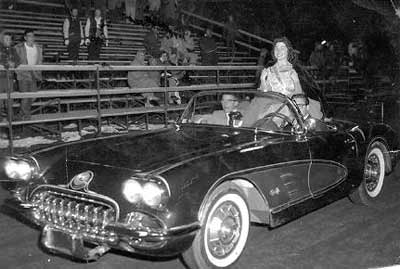
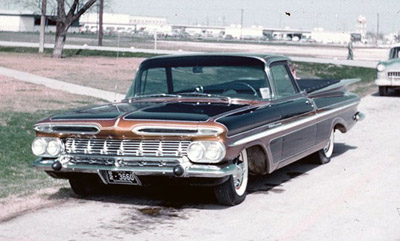



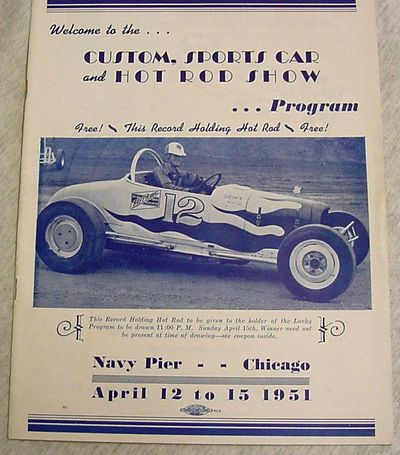



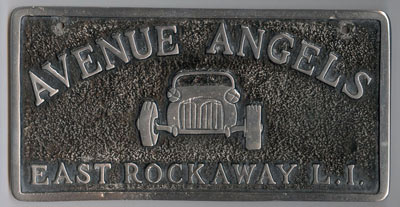



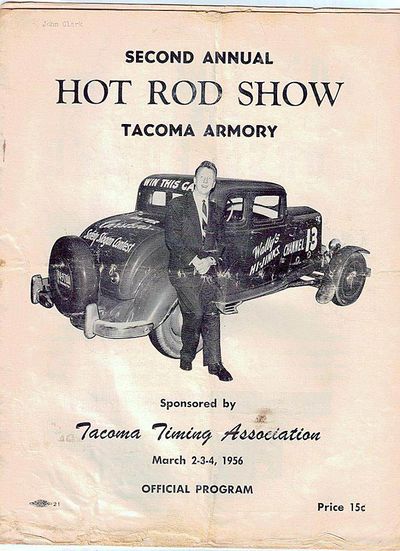


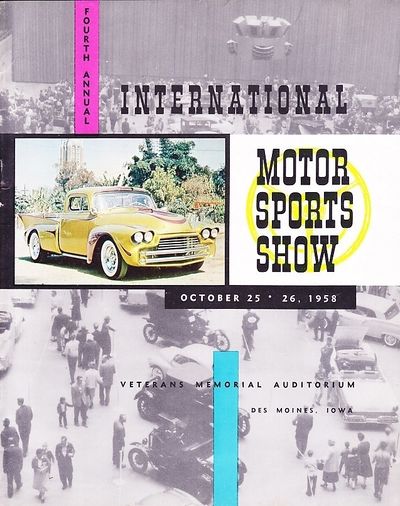

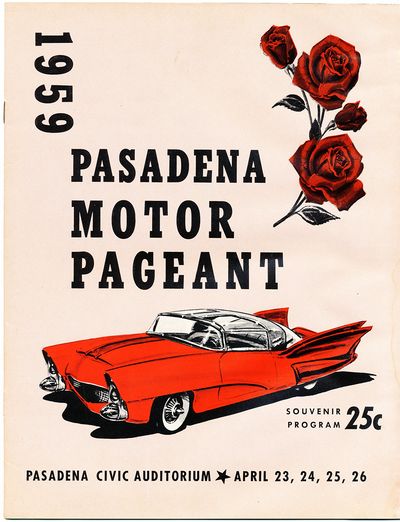

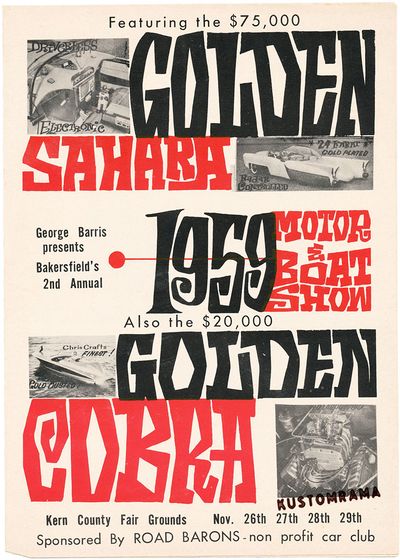


<-- 1940s - 1950 - 1951 - 1952 - 1953 - 1954 - 1955 - 1956 - 1957 - 1958 - 1959 - 1960s -->
Contents
- 1 Custom Cars of the 1950s
- 2 Carrying Over the 1940s
- 3 Defining “Custom” vs. “Restyled”
- 4 Subtle Elegance, Sports Customs, The Hirohata Merc, and Show Car Influence
- 5 Creative Grilles, Concept Cars, and a Kross Kountry Kustom
- 6 The Dawn of Radical Show Cars
- 7 Candy Paint, Pinstriping, and Mild vs. Radical
- 8 Quad Headlights, Bold Paint, and Kustomland
- 9 Paint Takes Center Stage
- 10 Show Cars Dominate—and Hydraulics Arrive
- 11 The End of an Era, The Start of Something New
- 12 Custom Cars of the Early 1950s
- 13 Customizing vs Restyling
- 14 West Coast Restyling of the Early 1950s
- 15 Deck Out
- 16 Aftermarket Accessory Businesses
- 17 Juvenile Delinquency
- 18 Hot Rods of the 1950s
- 19 Custom Cars of the 1950s
- 20 Sport Customs of the 1950s
- 21 Sport Cars of the 1950s
- 22 Show Cars of the 1950s
- 23 Streamliners of the 1950s
- 24 Dream Cars of the 1950s
- 25 Custom, Body, Paint, and Repair Shops of the 1950s
- 26 Speed Shops of the 1950s
- 27 Custom Upholstery Shops and Upholsterers of the 1950s
- 28 Pinstripers of the 1950s
- 29 Custom Car Dealerships of the 1950s
- 30 Custom Car and Hot Rod Clubs of the 1950s
- 31 Racing and Timing Associations of the 1950s
- 32 Custom Car and Hot Rod Shows of the 1950s
- 33 Custom Accessory Manufacturers of the 1950s
- 34 References
Custom Cars of the 1950s
The 1950s stand out as the golden age of customs. A time when the craft evolved more in ten years than it would in the following five decades. Builders refined late-1940s techniques and pushed them to extremes, fueled by returning WWII veterans with disposable income and mechanical skills. Magazines like Motor Trend and Hot Rod Magazine provided national exposure, car clubs spread the gospel of customization, and by the decade’s end, custom cars had gone from mild restyles to futuristic showpieces.
Carrying Over the 1940s
As we entered 1950, customs still followed late-1940s principles: graceful lines, chopped or padded tops, and smooth bodywork. Lowering blocks and dropped shackles brought cars closer to the pavement. A defining build that hit the streets early in 1950 was Nick Matranga's 1940 Mercury, restyled by the Barris brothers. Inspired by Johnny Zaro's Merc, Nick had George and Sam Barris chop his roof in 1949, then decided he liked the look without the B-pillar. George replaced it with a chrome-plated channel, creating a hardtop arc that would be copied on countless Mercs. This single innovation jump-started the early 1950s custom scene.
According to historian Albert Drake, “Every Detroit car had outgrown what was a pre-war body shape,” prompting many owners to modernize older models with fender skirts, dual exhausts, and metallic paint. Meanwhile, new, lower factory cars spurred owners to personalize their rides even further, laying the groundwork for the explosive growth to come.
Defining “Custom” vs. “Restyled”
By 1951, the custom scene had grown so popular that Trend Book 101 Custom Cars was published to clarify the difference between a full custom, built from the ground up, and a restyled job, which involved modifying a stock car without radically altering its design.
Though Trend Book No. 101 didn’t feature any 1949 Mercurys, that same year, two iconic chopped ’49s debuted: Sam Barris' 1949 Mercury and Jerry Quesnel's 1949 Mercury. Their rivalry has since fueled countless debates over which was finished first, marking an important milestone for custom car culture. Magazines like Hot Rod Magazine and Motor Trend soon dedicated more space to customs, while new titles such as Hop Up and Rod & Custom prepared to carry the movement well beyond California.
Subtle Elegance, Sports Customs, The Hirohata Merc, and Show Car Influence
Many builders were refining understated modifications by 1952, often drawing inspiration from European sports cars. Valley Custom Shop set the tone with Ron Dunn's 1950 Ford, sectioned and fitted with radiused wheel wells for a near-factory elegance rather than an all-out show-car vibe.
Around the same time, a new trend emerged: the Sport Custom, born from enthusiasts who couldn’t afford British imports like the Jaguar XK-120. Charles Martz of Aurora, Montana, pioneered this idea by merging a 1940 Hudson sedan with an ambulance, creating a buttercup-yellow roadster that graced the cover of Motor Trend January 1952. Sport Customs were often bigger and more powerful than their European counterparts, yet less agile, some were simply cut-down coupes, while others featured entirely new metal or fiberglass bodies.
Detroit’s own show cars also left a mark. The 1951 GM LeSabre, designed by Harley Earl, was heavily imitated for its aircraft-inspired styling and fins, nudging customizers to adopt more futuristic lines. Yet the year’s biggest head-turner was the Hirohata Merc, built by George and Sam Barris. Borrowing the curved hardtop window idea from Matranga’s ’40 Merc, they took it further with a bold two-tone paint job. Wherever it appeared, crowds gathered, confirming that even amid subtle elegance and sports car influences, radical innovation thrived.
Creative Grilles, Concept Cars, and a Kross Kountry Kustom
In 1953, customizers grew bolder with grille designs, mixing pieces from multiple makes or fabricating entirely new assemblies. Detroit's futuristic concept cars, featuring plexiglass tops, dual headlights, and aircraft fins, filtered into the custom scene, pushing builders toward show-focused creations. Magazines like Rod & Custom and Car Craft were now established, feeding readers a steady stream of radical ideas.
One major story was the Hirohata Merc’s cross-country trip. Already a California show winner, Bob Hirohata drove his low-slung ’51 Mercury to the 4th annual Indianapolis Custom Show. Days before leaving, he replaced its Flathead with a 1953 Cadillac V8, chronicling the adventure in Rod & Custom as “Kross Kountry In A Kustom.” The Merc’s slammed stance caused minor clearance issues, but removing one set of lowering blocks solved the problem. That journey helped spread California’s sleek, low style nationwide.
Meanwhile, Rod & Custom launched its “Dream Truck” project, using Spencer Murray's 1950 Chevrolet as a rolling lab readers could help design. Shops across California contributed everything from chopped tops to quad headlights, and each stage was documented in the magazine. Custom culture was no longer confined to local clubs; its influence was crossing state lines as effortlessly as the cars themselves.
The Dawn of Radical Show Cars
By 1954, some builders were shifting from daily-driven cruisers to outlandish, purely show-focused customs. The Hirohata Merc remained Bob’s daily driver, but Jim Skonzakes' 1953 Lincoln Capri, known as the Golden Sahara, debuted at the Petersen Motorama as perhaps the world’s first true “show custom.” It boasted a lift-off transparent roof, hinged door panels, and an opulent interior with a built-in cocktail bar, TV, hi-fi radio, and gold-plated trim by Carson Top Shop. This extravagance proved that radical show cars could stand on their own, separate from the practical customs of earlier years.
Customs also began appearing more often in film and TV, bridging the gap between hot rod culture and mainstream America. The Hirohata Merc, for instance, appeared in the 1954 film Runnin' Wild alongside Fred Rowe’s 1951 Mercury. Meanwhile, single-color lacquer finishes, block-sanded to perfection, were still common, though candy and pearl paints were waiting in the wings to redefine show-car flamboyance.
Candy Paint, Pinstriping, and Mild vs. Radical
By 1955, paint took center stage in the custom world. Mel Pinoli's Body and Paint Shop in Oakland introduced the first documented candy paint job on Ted Leventhal's 1950 Chevrolet, ushering in a new era of deep, lustrous finishes. Von Dutch’s flame work and Larry Watson's pinstriping turned paint into an art form, and even the Hirohata Merc showcased Von Dutch’s dash striping, dubbed “This is the City,” proving that fine details mattered as much as sweeping body mods.
Meanwhile, the gap between mild and radical grew. Some owners stuck to nosed, decked, and lowered cars, while others pursued extreme modifications like sectioning, frenched lights, scoops, and ornate chrome. Magazines celebrated both ends of the spectrum, urging customizers to push boundaries in whichever direction suited their vision.
Quad Headlights, Bold Paint, and Kustomland
By 1956, candy, flames, and scallops lit up drive-ins across Southern California, while builders like the Barris brothers experimented with quad headlights, an idea Detroit would soon adopt on their production cars. Larry Watson, then 16, honed his pinstriping on his own ’50 Chevy, a stepping stone to the House of Style he’d open the following year.
One of the era’s most iconic customs was Duane Steck's 1954 Chevroley, nicknamed the Moonglow. Chopped, nosed, and decked, it showed refined elegance despite being built in a backyard. Duane’s brother heated Plexiglas for the rear window in their mother’s oven, and the car wore a crisp white-and-blue finish before Larry Watson added subtle pinstriped nudes. Duane was part of the Renegades of Long Beach, a powerhouse club in the LA suburbs collectively known as “Kustomland,” which produced legendary names like George and Sam Barris, Ed Roth, and Dean Jeffries.
Meanwhile, radical experimentation continued all over the world. Up in Oregon, Ron Courtney's X-51 Ford sported massive fins, and in Finland, Arvi Hänninen built one of Europe’s earliest customs. As 1956 rolled on, mild and wild builds both thrived. Some owners favored a simple, shaved look, while others craved trophies with radical fins and vibrant paint.
Paint Takes Center Stage
In 1957, paint reached a fever pitch. Larry Watson opened Watson's House of Style, turning out scalloped, paneled, flamed, and striped jobs daily, while Gene Winfield perfected his fade/blended candy technique. Youth culture, fueled by rock ’n’ roll, embraced customs wholeheartedly, updating older cars with bolder paint, bubble skirts, and wilder body mods.
Even Duane Steck's Moonglow returned to the spotlight with a fresh set of scallops by Watson in 1957. Drive-in parking lots across Southern California often resembled impromptu car shows, each ride competing for attention.
Show Cars Dominate—and Hydraulics Arrive
By 1958, George Barris and Joe Bailon were regarded as the West Coast’s top customizers. At the ninth annual Oakland Roadster Show in February, they clashed with two futuristic creations: Barris's Aztec and Bailon's Mystery. Both were so impressive they tied for the Custom Car D’Elegance Award, proving how far show cars had come.
At the same show, Richard Peters' Ala Kart, a ’29 Ford pickup built by Barris, won America's Most Beautiful Roadster Award. This really signaled the rise of meticulously finished customs designed for trophies and magazine covers rather than daily driving. Interiors grew ever more elaborate, with tuck-and-roll upholstery, chrome trim, and exotic materials matching increasingly wild paint jobs.
California Vehicle Code 24008, enacted in 1957 and enforced by 1958, targeted excessively low cars. Hot rodders and customizers responded by adapting hydraulic systems originally designed for aircraft or industrial tools, allowing them to raise their cars to legal heights, then drop them for shows or cruising. Two pioneers in this field were Jim Logue and Ron Aguirre. Jim’s “Fabulous X54,” a 1954 Ford, featured hydraulics at all four corners, while Ron’s Corvette, the X-Sonic, used a Port-A-Power-based system to lift the front end. Debate persists over who was first, but both introduced a revolutionary idea that would evolve into the lowrider movement.
With hydraulic lifts, radical show cars like the Ala Kart, and iconic builds tying at major events, 1958 underscored how far customs had progressed from their practical, street-driven roots. They were now spectacles of engineering and style, pushing boundaries both legally and creatively.
The End of an Era, The Start of Something New
As the ’50s drew to a close, some builders toned down busy paint jobs, preferring single-tone candy or metallic finishes. Gene Winfield's Jade Idol, a ’56 Mercury built for Leroy Kemmerer, garnered national acclaim with sculpted body mods and signature fade paint, while Larry Watson refined everything from subdued candies to dramatic panels. Meanwhile, muscle cars and drag racing began pulling attention away from customs.
Yet Duane Steck's Moonglow bridged the transition. Larry Watson repainted it several times, culminating in a candy blue finish over a sparkling silver pearl base in 1959, which Watson considered one of his finest. Although panel painting was still turning heads, simpler but striking single-color finishes hinted at the sleek, less-cluttered style about to define the early 1960s.
From understated customs in 1950 to space-age show rods by 1959, the 1950s witnessed an unprecedented surge in creativity. Builders refined every technique: leadwork, chopping, radical paint, and hydraulics, while magazines, car shows, and youth culture pushed the scene to national prominence. By 1960, customs had reached a peak of artistry and influence, setting the stage for the metalflake paint, bolder graphics, and wild show rods of the coming decade.
Custom Cars of the Early 1950s
According to Portland, Oregon hot rodder, historian and author Albert Drake, a revolution occurred in terms of styling and customizing in the late 1940s and the early 1950s. "Every Detroit car had outgrown what was a pre-war body shape, and the new cars were longer, lower, sleeker. Therefore, many people wanted to make their older cars look more modern, or at least a bit nicer." In 1982 Drake wrote an excerpt about the roots of hot rodding where he pointed out that; "Today we look back at pre-1949 cars with a wistful eye but at the time they seemed drab; high and boxy, with plain interiors, and painted a few standard colors (usually black, dark blue, or grey). It didn't, however, take much to make them more interesting: lowering blocks or shackles, fender skirts, dual exhausts with chrome 'echo cans,' deluxe seat covers and a metallic paint job would cause the guy beside you at the light to sit up and take notice." The owners of older cars wanted to update them, while owners of new cars wanted to individualize them. According to Drake, a 1936 Ford could be bought for under $75. Shackles, solid side panels, dual exhausts, and whitewall tires might cost another $50 bucks, and the result was a neat-looking car. "For a few bucks more the spare tire bracket could be cut so the tire rode close to the deck, and dual spotlights added. If the owner was lucky enough to find a pair of '37 DeSoto bumpers he'd be traveling in style."[4]
Customizing vs Restyling
In 1951, Trend Book 101 Custom Cars was published by Trend, Inc as a result of the growing interest in customized cars. The introduction in the book stated early that restyling and customizing are two things that, like the arts, are better left for the masters. The book defined a custom job as a job that had been custom-built, from the ground up as it were and to order. A restyled job was defined as a stock auto that had been altered somewhat from the original design. Therefore, if you were going to customize a car you would practically start from scratch ending up with a hand-built, totally different creation. If you were to restyle a car, you would change the outside appearance, without evolving a drastically-modified car. The terms were often misused, and in order to explain where the restyled car leaves off and a custom job begins, the following definition was explained in the book: "A restyled car can include any or all of the following modifications without actually being a custom job: a bull-nose, a deck job, fadeaways, a new grille, and/or new bumpers. When it gets to chopped tops and channeling, the car would more properly be termed a custom job." With these two terms defined, the purpose of the book was to show readers the latest trends of customized and restyled cars from coast to coast.[5]
West Coast Restyling of the Early 1950s
Common and favored restyling-features on many West Coast custom jobs in the early 1950s included body modifications such as nosing and decking, license plate set on bumper, tail lights set in bumper guards, dual spotlights and fender skirts.
Deck Out
In the early 1950s, "Deck Out" was a term for restyling a car by adding extra ornamentation such as metal sun visors, chrome exhaust stacks, port holes, extra lights forward and aft, fender flaps, extra radio aerials, bumper guards and more accessories you could buy from your local accessory shop. In the other end were motorists that believed in restyling by smoothing off their cars. This process span from simple modifications such as removal of ornamentation, dechroming and sealing of the car to give a port less, louver-less, one-piece look to chopping the top or channeling the body over the frame.[5]
Aftermarket Accessory Businesses
The aftermarket accessory business boomed in the 1950s as the demand for popular custom bolt-on times such as fender skirts, lowering blocks, hubcaps, and spotlights increased.
Juvenile Delinquency
The total number of teenagers arrested in the country in 1947 was 34,376. By 1957 the number had climbed to 253,817. As early as 1953 a Boston judge was quoted saying; "We have the spectacle of an entire city terrorized by one-half of one percent of its resident. And the terrorists are children."[6]
Hot Rods of the 1950s
Jim Hill's 1921 Dodge Truck
Norm Grabowski's 1922 Ford Model T Bucket - The Lightning Bug / The Kookie T
John Lane's 1924 Ford Model T Roadster Pickup
Terry Sweem's 1925 Ford Model T Roadster Pickup
Tommy Ivo's 1925 Ford Model T-Bucket
Bob Smith's 1927 Ford Model T Roadster
Carl Burnett's 1927 Ford Model T Roadster
Gene Winfield's 1927 Ford Model T Roadster
Louis Banto and Jack Perre's 1927 Ford Model T Roadster
Louis Banto and Jack Perre's 1927 Ford Model T Roadster
Paul Sylva's 1927 Ford Model T Roadster
Dan Wittenberg's 1928 Ford Model A Pick Up
Pat McNamara's 1928 Ford Model A Pick-Up
Bill Vogt's 1929 Ford Model A
Bill Welch's 1929 Ford Model A Roadster
Buzz Pitzen's 1929 Ford Model A Roadster
Carl Fleischmann's 1929 Ford Model A Roadster
Duane Dewey's 1929 Ford Model A Roadster
Ed Seltzer's 1929 Ford Model A Roadster
Hugh Nutting's 1929 Ford Model A Roadster
Jerry Woodward's 1929 Ford Model-A Roadster - Thunder Rod
Joe Brienza's 1929 Ford Model A Coupe
Kenny Smith's 1929 Ford Model A Roadster
Richard Peters' 1929 Ford Model A Pickup - The Ala Kart
Cam Snappers of Newburyport's 1930 Ford Model A Roadster
George Wiegand's 1930 Ford Model A Roadster Pick Up - The Barracuda
Michael Lamm's 1930 Ford Model A Roadster
Dick Dean's 1931 Ford Model A Victoria
Joe Tully's 1931 Ford Model A Coupe
Mike Brodski's 1931 Ford Model A Coupe
Quint Meland's 1931 Ford Model A Roadster - The RoadStar
Ralph Stone's 1931 Ford Model A Roadster
The Alexander Brothers' 1931 Ford Model A Coupe
Norman Kopp's 1932 Chevrolet Two Door Sedan
Al and Dave Tarkanyi's 1932 Ford 3-Window Coupe
Allan Fielding's 1932 Ford 5-Window Coupe
Bert Mouron's 1932 Ford Roadster
Bill Jerry's 1932 Ford Roadster
Bill Kelly's 1932 Ford 3-Window Coupe
Bill Peterson's 1932 Ford Roadster
Bosse Ericsson's 1932 Ford Roadster
Bruce Olson's 1932 Ford 5-Window Coupe
Clarence Catallo's 1932 Ford 3-Window Coupe - Silver Sapphire/Little Deuce Coupe
Clifford Ambrose's 1932 Ford 5-Window Coupe
Conrad W. Jacobs' 1932 Ford 3-Window Coupe - "The Klondyke Koupe"
Danny Schwartz' 1932 Ford 5-Window Coupe
Don Broyles' 1932 Ford Roadster
Ed Ward's 1932 Ford Roadster
Gordy Kordowsky's 1932 Ford 5-Window Coupe
Howard Leever & Fred Esser's 1932 Ford 3-Window Coupe
Jack Schleich's 1932 Ford 3-Window Coupe
Johnny Bierfeldt's 1932 Ford Roadster
Jon Grinager's 1932 Ford 3-Window Coupe
Laverne A. Stetzer's 1932 Ford 5-Window Coupe - The York Coupe
Lew Wolff's 1932 Ford Roadster
Per Røed's 1932 Ford Cabriolet
Ted Sitterley's 1932 Ford 3-Window Coupe
Wayne Knudsen's 1932 Ford 3-Window Coupe
Bill Martin's 1933 Ford 5-Window Coupe
Deaner Probst's 1933 Ford Cabriolet - Lil' Dough
Gary Stermer's 1933 Ford 3-Window Coupe
George Smaldone's 1934 Ford 3-Window Coupe
Joaquin Arnett's 1934 Ford 3-Window Coupe
Joe Brienza's 1934 Ford Convertible - The Brienza Special
Monte Trone's 1933 Ford 3-Window Coupe
Dick Hanson's 1934 Ford 3-Window Coupe
Gene "Clean Gene" Sadoian's 1934 Ford Four-Door Sedan
Gil Lippincott's 1934 Ford Tudor
Pat Weise's 1934 Ford 3-Window Coupe
Ron Maxwell's 1934 Ford 5-Window Coupe
Tommy Henderson's 1934 Ford Cabriolet
Walter Leeman's 1934 Ford 5-Window Coupe
Solon Pierce's 1935 Ford 3-Window Coupe
Tore Tømmerås' 1935 Ford 5-Window Coupe
Jon R. Ford's 1937 Ford Convertible
Garret Walther's 1940 Ford Coupe
Larry Ewing's 1940 Ford DeLuxe Coupe
Larry Ewing's 1950 Oldsmobile 88 Coupe
Ed Roth's Outlaw
Custom Cars of the 1950s
Herman Broome's 1931 Ford Model A Roadster
Bill Smith's 1934 Ford Roadster Custom
John Patterson's 1934 Ford Convertible
Bruce Rosengren's 1936 Ford Cabriolet
Delwyn Triska’s 1936 Ford 5-Window Coupe
Hank Fournier's 1936 Ford 5-Window Coupe
Joe Brienza's 1936 Ford 3-Window Coupe
R.I. Steere's 1936 Ford Convertible
Rich Vachata's 1936 Ford Convertible
Sam Benton's 1936 Ford Coupe
Glenn Johnson's 1937 Ford Coupe
Gene McCrickard's 1937 Lincoln Zephyr Coupe
Doug Osterman's 1937 Plymouth Coupe
Dick Jackson's 1938 Chevrolet Sedan
John Bozio's 1939 Buick Century Convertible
Bill Collins' 1939 Ford Convertible
Clarence Patterson's 1939 Ford Convertible
Ken Costello's 1939 Ford Coupe
Fred Crellar's 1940 Chevrolet Convertible
Bob Brown's 1940 Ford Coupe
Clyde Walther's 1940 Ford Convertible
Dick Brooks' 1940 Ford Convertible
Dick Colarossi's 1940 Ford Coupe
Erik Chaputa's 1940 Ford Tudor Sedan
Manuel Gonzalez's 1940 Ford Coupe
Nick De Simon's 1940 Ford Coupe
Paul McGill's 1940 Ford Convertible
Nick Dunkavich's 1940 Hupmobile Roadster
Maximilian King's 1940 Mercury Convertible
Mel Lehman's 1940 Mercury 4-Door Sedan
Nick Matranga's 1940 Mercury
Virgil Shuck's 1940 Mercury Coupe
Dan and Ken Hiramoto's 1941 Buick Century Convertible - Raven
Bill Cole's 1941 Ford 4 Door Sedan
Frank Monteleone's 1941 Ford
Harry Costa's 1941 Ford Convertible
Jack Stewart's 1941 Ford Coupe
Jack T. Chandler's 1941 Ford
Joe Urritta's 1941 Ford
John Sak's Second 1941 Ford Convertible
Ray Furgal and Ron Seaver's 1941 Ford Convertible
Frank Layman's 1941 Lincoln Zephyr Convertible
George Contaoi's 1941 Mercury Coupe
Jack Telnack's 1941 Mercury Convertible
Rudy Makela's 1942 Cadillac Convertible - "WOW"
Bob Baker's 1946 Ford Four-Door Sedan
Bud Unger's 1946 Ford Convertible
Bob Hoshiko's 1946 Mercury
Tony Sestito's 1947 Cadillac Convertible
Fred Thomas' 1947 Chevrolet Four-Door Sedan
Joe Hurst's 1947 Chevrolet Convertible
Sam Gates' 1947 Ford Club Coupe
Jerry Berg's 1947 Mercury Convertible
Leroy Heinrichs' 1947 Plymouth Club Coupe
Louie Stojanovich's 1947 Plymouth Club Coupe
Tommy Thornburgh's 1947 Studebaker Champion Convertible
Jack Crabbs' 1948 Buick Roadmaster - The Black Flame
Art Jones' 1948 Chevrolet Fleetline Aerosedan
Jerry Campbell's 1948 Chevrolet Fleetline Aerosedan
Frank Layman's 1948 Packard Convertible<be>
William J. Unger's 1949 Cadillac Convertible
Bill Muehlstedt's 1949 Chevrolet
Carl Abajian's 1949 Chevrolet Convertible
Dick Ward's 1949 Chevrolet
Frank Livingston's 1949 Chevrolet Fleetline - The Caribbean
Harold Johnson's 1949 Chevrolet
Ronald Asal's 1949 Chevrolet Convertible
Spencer Murray's 1949 Chevrolet
Arvi Hänninen's 1949 Checker Coupe
Bill Irwin's 1949 Ford Convertible
Buster Litton's 1949 Ford
Chas Haggert's 1949 Ford Convertible
Jim Galvin's 1949 Ford Tudor
Joe Crisafulli's 1949 Ford Convertible
John W. Britton's 1949 Ford
Lloyd C. Hammond's 1949 Ford - The Majestic Lady
Michael Violante's 1949 Ford Convertible
Milton Depuy's 1949 Ford
Ray Duckworth's 1949 Ford Club Coupe
Vern LaCoursiere's 1949 Ford Coupe
Duane Aspengren's 1949 Hudson - Night Train
Joe Brienza's 1949 Mercury
Lloyd Myers' 1949 Mercury Convertible
Paul Wood's 1949 Mercury Coupe
George Contaoi's 1949 Oldsmobile Fastback
Sam Barris' 1950 Buick Sedanette
Tony Alvez' 1950 Cadillac Convertible
Dave Jenkins' 1950 Chevrolet
Helen Manning's 1950 Chevrolet Fleetline
Howard Buysman's 1950 Chevrolet
Jim Musick's 1950 Chevrolet Bel Air
Larry Watson's 1950 Chevrolet - The Rose Mist
Santo Vasques' 1950 Chevrolet
Ted Leventhal's 1950 Chevrolet Convertible
Al Twitchell's 1950 Ford Convertible
Bill Hines' 1950 Ford - The Bat
Bill Schott's 1950 Ford Coupe
Bill Wentz's 1950 Ford "Ranchero"
Chuck DeWitt's 1950 Ford Convertible
Don Bliss' 1950 Ford Convertible
Doyle Bidwell's 1950 Ford Coupe
Fred Thomas' 1950 Ford Two-Door
George Egan's 1950 Ford Convertible - The Apollo
Jerry Silvester's 1950 Ford
Merton Peterson's 1950 Ford
Pete Millino's 1950 Ford Convertible
Richard Gregg's 1950 Ford Pickup - The Capri
Robert Zepke's 1950 Ford Convertible
Vern LaCoursiere's 1950 Ford Convertible
Buddy Alcorn's 1950 Mercury
Don Pulford's 1950 Mercury
Gene Strieter's 1950 Mercury
George Mizzi Jr.'s 1950 Mercury Convertible - The Purple Bug
Jerry Harris' 1950 Mercury
Leo Lyons' Ultra Modern Merc
Ralph Testa's 1950 Mercury
Sonny Morris' 1950 Mercury
Wally Welch's 1950 Mercury
Bill Daniels' 1950 Oldsmobile
Garret Walther's 1950 Oldsmobile Fastback
Jack Stewart's 1950 Oldsmobile - The Polynesian
Mel Gerrard's 1950 Oldsmobile 88
Paul Vona's 1950 Oldsmobile Coupe
Robert Martinez' 1950 Oldsmobile 98
Phil Macchiarella's 1950 Plymouth four-door
Carl Szembrot's 1950 Studebaker Convertible
Harold Agresti's 1951 Cadillac Series 62 Coupe
Howard Tirban’s 1951 Chevrolet - “Lil’ Bitty Pretty One”
Jake Bultsma's 1951 Chevrolet Bel Air
Jerry Sahagon's 1951 Chevrolet Club Coupe
Jim Laughead's 1951 Chevrolet Bel-Air Hardtop
Norman Brown's 1951 Chevrolet Fleetline
Richard Torres' 1951 Chevrolet
Ross Barnes' 1951 Chevrolet
Walter Leeman's 1951 Chevrolet Fleetline
Bill Collins' 1951 Ford Two-Door Sedan
Don Blake's 1951 Ford 4-Door
Don Tubbs' 1951 Ford Victoria
Joe Tocchini's 1951 Ford Victoria - The Mystery
Pete Chiello's 1951 Ford Victoria
Ron Hart's 1951 Ford Club Coupe
George E. Goodhead, Jr.'s 1951 Henry J Corsair Convertible
Bill Wolfe’s 1951 Mercury
Don Tubbs' 1951 Mercury Coupe
Henry Dominguez's 1951 Mercury
Noal Johnston's 1951 Mercury
Ron Dragoo's 1951 Mercury Coupe
Roy Hewitt's 1951 Mercury
Bill Collins' 1951 Oldsmobile
Chuck Sanders' 1951 Oldsmobile - The Black Panther
Frank Airheart's 1951 Oldsmobile 98 Convertible
Jim Bowers' 1951 Oldsmobile
Joe Crisafulli's 1951 Oldsmobile
Charles DeLacy's 1951 Studebaker Starlight Coupe
Bob Martin's 1952 Chevrolet Convertible
Leon Welmas' 1952 Chevrolet Convertible
Tommy D'Amico's 1952 Chevrolet Convertible
Al Twitchell's 1952 Ford Station Wagon
Chuck Johnson's 1952 Ford Victoria
Jim Genty's 1952 Ford Victoria - Nugget
Keith Hunt's 1952 Ford Convertible
Larry Ernst's 1952 Ford Convertible - Pharaoh's Pacer
Nick Cozzitorto's 1952 Ford F-1 Pickup
Ron Fagundes' 1952 Ford Victoria - The Ronbardue Kart
Ron Lerdahl's 1952 Ford Convertible
Ron Lerdahl's 1952 Ford Victoria
Clark Gable's 1952 Jaguar XK 120
Loma O. Johnson's 1952 Kaiser - The Johnson Special
Ken Foress' 1952 Mercury Convertible
Don Stone's 1952 Oldsmobile 88 Convertible
Jack Nethercutt's 1952 Oldsmobile Holiday 98 - The Vienesse
Bruce Brown's 1952 Packard Convertible
Emory Bozzani's 1952 Plymouth Sedan
1952 Spohn Palos
Anthony Heinsbergen's Muntz
John Bozio's 1953 Buick Roadmaster
Wally Troy's 1953 Buick - The Troy Custom
Bill Hoffman's 1953 Chevrolet Bel Air
Frank and Charles Gilardone's 1953 Ford
Hayward Mendenhall's 1953 Ford Pickup
Howard Yoshimoto's 1953 Ford Pick Up
Larry Cantor's 1953 Ford Club Coupe
Royce Blomberg's 1953 Ford
Vince Ciganik's 1953 Ford Convertible
Jim Skonzakes' 1953 Lincoln Capri - The Golden Sahara
W. H. Sees' 1953 Mercury
Bill and Bob Glazier's 1953 Oldsmobile Super 88 Convertible - The Candy Wagon
Bruno and Reino Maki's 1953 Oldsmobile Convertible
Doug Landwer's 1953 Plymouth
Michael Malamphy's 1953 Plymouth Convertible - The Golden Aztec
Bruce Bartlett's 1953 Studebaker Starlight Coupe
Jack Aberth's 1953 Studebaker
Lee Talbot and Sam Chakries' 1953 Studebaker Pickup
Bob Schremp's 1954 Chevrolet Bel-Air
Duane Steck's 1954 Chevrolet - The Moonglow
Gerald Twamley's 1954 Chevrolet
Louie Gaulrapp's 1954 Chevrolet
Andy Belusko's 1954 Ford
Buzz McLeod's 1954 Ford Convertible
Jim Logue's 1954 Ford Convertible
Larry Cooper's 1954 Ford
Martin Srabian and Morris Srabian's 1954 Ford Pickup - The Wild Kat
Ralph Ehorn's 1954 Ford F-100
Rudy Rodriguez’s 1954 Ford
Terry Smith's 1954 Ford
Wally Knoch's 1954 Ford Convertible
Bobby Yamazaki's 1954 Mercury
Butch Flobeck's 1954 Mercury
Herb Conway's 1954 Mercury
John Nadzon's 1954 Mercury - The Mysterian
Ronnie Fossen's 1954 Studebaker Starlight Coupe
Delmar McCutcheon's 1955 Buick - The Kandy Kane
Merlin Windham's 1955 Buick - "Dragon Wagon"
Tad Hirai's 1955 Buick Century
Bill Carr's 1955 Chevrolet Bel Air - The Aztec
Bill Sharpe's 1955 Chevrolet
Bob McNulty's 1955 Chevrolet Corvette
George Barris' 1955 Chevrolet Truck - The Kopper Kart
Jerry Feigner's 1955 Chevrolet Bel Air - Lil Honey Bee
Jim Seaton's 1955 Chevrolet
Milt Goodman's 1955 Chevrolet Bel Air
Sharon Warner's 1955 Chevrolet Bel Air
Stan Makrush's 1955 Chevrolet Convertible
Tom McNamara's 1955 Chevrolet
Bill Burnett's 1955 Ford Crown Victoria
Bob Palmer's 1955 Ford Thunderbird - The Golden Bird
Don Ellis' 1955 Ford Thunderbird
Gil Ayala's 1955 Ford Thunderbird - The Wild Bird
Jerry Drake's 1955 Ford Fairlane - India Ivory
Joe Castro's 1955 Ford Thunderbird - The CandyBird
Joe Cirimele's 1955 Ford
Bruce Olson's 1955 Plymouth Belvedere 4 Door
Leroy Heinrichs' 1955 Plymouth
Gary Ruddell's 1955 Pontiac
Dick Gonzales' 1955 Studebaker
Ivan Peroff's 1956 Buick Century
Eric Bracher's 1956 Chevrolet
Helen Avila's 1956 Chevrolet - She Devil
J.R. Kovalski's 1956 Chevrolet
Jerry Sarkozi's 1956 Chevrolet Delray
Jim Doss' 1956 Chevrolet
Lenny Macchiarella's 1956 Chevrolet Pickup
Ron Aguirre's 1956 Chevrolet Corvette - The X-Sonic
Ron Luchs' 1956 Chevrolet 150 Sedan - Miss Taboo
George Barris' 1956 Continental Mark II
Chuck O'Malley's 1956 Dodge
Ed Roth's 1956 Ford F-100
Larry DeLuca's 1956 Ford F-100
Don Von Dwingelo's 1956 Ford Thunderbird
Roy Senior's 1956 Ford Victoria
Danny Purinton's 1956 Mercury
Jack Arnold's 1956 Mercury
Leroy Kemmerer's 1956 Mercury - The Jade Idol
Mickey Ellis' 1956 Mercury
Al Neblett's 1956 Oldsmobile Four-Door - The Batmobile
Joe Crisafulli's 1956 Oldsmobile
Ken Sowers' 1956 Plymouth
Ron Dulin's 1956 Plymouth Fury
Dean Jeffries' 1956 Porsche 356 Carrera
John Hychko's 1956 Studebaker Golden Hawk - The Polynesian
Ed Larsen's Barracuda
Bob Palladino's 1957 Buick Century - The Candy Wagon
Jack James' 1957 Buick Special
Bob Webster's 1957 Chevrolet
Carl Swenson's 1957 Chevrolet
Darol Jorgenson's 1957 Chevrolet Corvette
Dave Jenkins' 1957 Chevrolet Bel-Air
Dick King's 1957 Chevrolet Four-Door Hardtop - Kings Royalty
Doug Osterman's 1957 DeSoto
Harry Okuda's 1957 Dodge
Anglo Vacco's 1957 Ford Convertible
Bob Turgeon's 1957 Ford Thunderbird - "Le Perle"
David Rolin's 1957 Ford - The Tormentor
Dick Jackson's 1957 Ford
Don Provance's 1957 Ford Fairlane Victoria - Gold Digger
George Mitobe's 1957 Ford Ranchero
Hilton Vail's 1957 Ford Fairlane 500
Jack Smario's 1957 Ford
Jerry DeVito's 1957 Ford Fairlane - The Maze
Russ Edgers' 1957 Ford Convertible
Wayne Christensen's 1957 Ford Ranchero
Chuck Burkart's 1958 Chevrolet Impala
Frank Goehring's 1958 Chevrolet Impala
Phil Sowa's 1958 Chevrolet Impala
Dick Jackson's 1958 Ford Thunderbird
Jerry Halak's 1958 Ford Convertible
Larry Watson's 1958 Ford Thunderbird - Vino Pasiano / The Burgundy Bird
Terry Browning's 1958 Ford Ranchero - "The Ruby Ranch"
Bill Merrill's 1959 Chevrolet Corvette
Ed Biggs' 1959 Chevrolet El Camino
Sport Customs of the 1950s
Bob Knessel's Sports Custom
The Donz Lancer
Ed Rotzell's SCOLF
Garner Jones' 1951 Ford Sport Custom - The Little Jewel
1952 Fageol Pataray Roadster
The Manta Ray
Martin S. Papazian's Cordster
1956 Volante
Sport Cars of the 1950s
1953 Kurtis Sorrel SR-100 Roadster
1954 Edwards America Convertible
1955 Debonnaire Convertible
1958 MacMinn Le Mans Coupe
Show Cars of the 1950s
Streamliners of the 1950s
Dream Cars of the 1950s
Ralph Lysell's Rally
Almar Nordhaug's Dream Car
Joar Kristiansen's LeSabre
Kenneth Kamp's Otter
Custom, Body, Paint, and Repair Shops of the 1950s
A-1 Body Work
Advanced Custom Paints
Alexander Brothers
Bailon's Custom Shop
Barris Kustoms
Bertolucci Body & Fender Shop
Bill Babb's Custom Shop
Bob's Body Shop
Branson's Custom Shop
Clayton Metal Shop
Clyde's Body Shop
Cooper Body Shop
Cotton's Paint & Body Shop
Custom Painting and Repair, Automotive Refinishing Body And Fender Work
Don's Body Shop
Donz Custom Shop
Flyers Body Shop
Frank's Garage
G.E. Rudisill & Sons
Gene's Custom Shop
Heinrichs Auto
Jerry's Auto Body
Joe Andersen's Custom Shop
J & J Auto Painting
Katayanagi Custom Paint
Korky's Kustom Shop
Lundquist Coach Craft
Moorehead Bros
Neal McCarn Auto Body
Noble Paint & Body Shop
Pat's Auto Body
Pinky's Custom Shop
Pinoli Paint Shop
R. K. Body Works
Shanklin's Custom Shop
Shucks Body Shop
Spohn Coachworks
Star Kustom Shop
Stuckey Kustom
Unger Auto Body Company
Vallejo Auto Body
Valley Auto Body
Valley Custom Shop
Vince Kane Body Shop
Wally's Garage
Winfield's Custom Shop
Wreck-Nu Collision
Speed Shops of the 1950s
Bill Frick Motors
Joe Wolf's Hollywood Speed Shop
Stewart Speed Automotive
Custom Upholstery Shops and Upholsterers of the 1950s
Avenue Auto Interiors
Dick and Dale's Auto Upholstery
Duke Custom Shop
Dukes & Duchess Trim Shop
Fremont Trim Shop
Hall Upholstery
Harold Block
Joe's Auto Trim Shop
Kay Seat Covers
L & L Upholstery Shop of Glendale
Lee's Golden Needle
Pacific Custom Upholstery
San Leandro Seat Cover Center
Scott's Top Shop
Temme Top & Trim
Pinstripers of the 1950s
Andy Southard
Dean Jeffries
Dick Katayanagi
Ed Roth
Pat Eskibar
Von Dutch
Walt Prey
Walter Leeman
Custom Car Dealerships of the 1950s
Custom Car and Hot Rod Clubs of the 1950s
Aces
Agitators of Fullerton
Adaptors of Hartford
Alberni Valley Rod and Custom Association
Ann Arbor Timing Association
Apostles of Shawnee
Aristocrats of Portland
Avenue Angels of East Rocakway
Bay Buggies
Bean Bandits
Bearing Busters of Berwyn
Black Diamond Timing Association
Blue Hills Road Runners
Brahmans of Torrance
Carbs of Hartford
Carlsbad Oilers
Cam Snappers of Newburyport
Cams of Connecticut
Casuals of San Fernando Valley
Chaparrals of Dallas
Counts of the Cobblestone
Coupes of Tulsa
Clusters of Grays Harbor
Cut-Outs of Long Beach
Davenport Idlers
Dearborn Custom Auto Club
Dorchester Idlers
Downriver Modified
Downshifters of Westport
Draggin Sirs of Seattle
Drivin Deuces
Dutchmen of Paramount
Gladiators of Redlands
Glendale Esquires
Haulin' Gents
Headers of West Hartford
Hot Heads of East Hartford
Hot Heads of Inglewood
Hot Heads of San Fernando Valley
Iowa Sinners
Kansas City Dragettes
Kingsmen of Miles City
Long Beach Renegades
Long Beach Searchers
Lords of Wilmington
Motor Masters
Motor Mounts of Bloomfield
Nomads of Deerfield
North Bay Rodsters
Norwalk Coachmen
Oakland Swanx
Qaurter Milers of Dallas
Pharaohs of Toledo
Pharaohs of Wilmington
Ramblers of Portland
Road Devils of Hawaii
Road Kings of Burbank
Roadents of Fontana
Rock Island Piston Pushers
San Antonio Road Runners
San Jose Igniters
San Jose Rod and Wheelers
San Leandro Cranks
Saints of Sydney
Shamrocks of Alameda
Shifters of Pontiac
Spark Jumpers of Lincoln Park
Squires of Chatham
Stags of Ogden
Stockers of Oakland
Strokers of Baldwin
Strokers of Saginaw
Strokers of Springfield
Swanx of Oakland
T-Timers of El Monte
Tacoma Toppers
The Kings of Portland
Throttle Tamers of Midland
Townsmen of East Long Beach
Ty-Rods of Rockville
Vagabonds of Deerfield
Wolf Hounds of East Los Angeles
Racing and Timing Associations of the 1950s
Kansas City Timing Association
Nebraska Hot Rod Racing Association
Southern California Timing Association
Custom Car and Hot Rod Shows of the 1950s
Bakersfield Motor & Boat Show
Bearing Busters Rod & Custom Show
Custom, Sports Car and Hot Rod Show
Fresno Autorama
Hot Rod & Custom Car World's Fair
Indianapolis Custom Auto Show
International Motor Sports Show
Oakland Roadster Show
Mid-America Auto Spectacular
Pasadena Auto Show and Reliability Run
Pasadena Motor Pageant
Portland Roadster Show
San Luis Obispo Motor Show
Speedorama Auto Sports Show
Tacoma Hot Rod Show
Custom Accessory Manufacturers of the 1950s
References
Did you enjoy this article?
Kustomrama is an encyclopedia dedicated to preserve, share and protect traditional hot rod and custom car history from all over the world.
- Help us keep history alive. For as little as 2.99 USD a month you can become a monthly supporter. Click here to learn more.
- Subscribe to our free newsletter and receive regular updates and stories from Kustomrama.
- Do you know someone who would enjoy this article? Click here to forward it.
Can you help us make this article better?
Please get in touch with us at mail@kustomrama.com if you have additional information or photos to share about 1950s.
This article was made possible by:
SunTec Auto Glass - Auto Glass Services on Vintage and Classic Cars
Finding a replacement windshield, back or side glass can be a difficult task when restoring your vintage or custom classic car. It doesn't have to be though now with auto glass specialist companies like www.suntecautoglass.com. They can source OEM or OEM-equivalent glass for older makes/models; which will ensure a proper fit every time. Check them out for more details!
Do you want to see your company here? Click here for more info about how you can advertise your business on Kustomrama.




